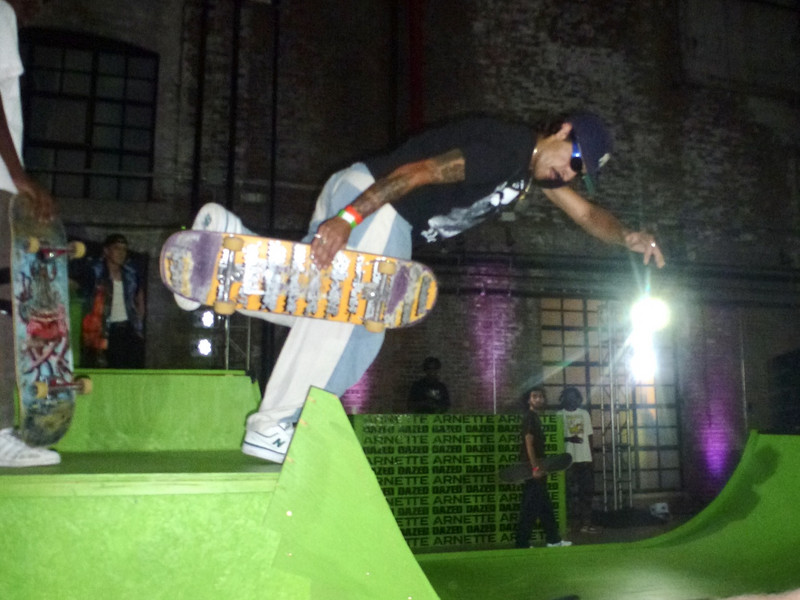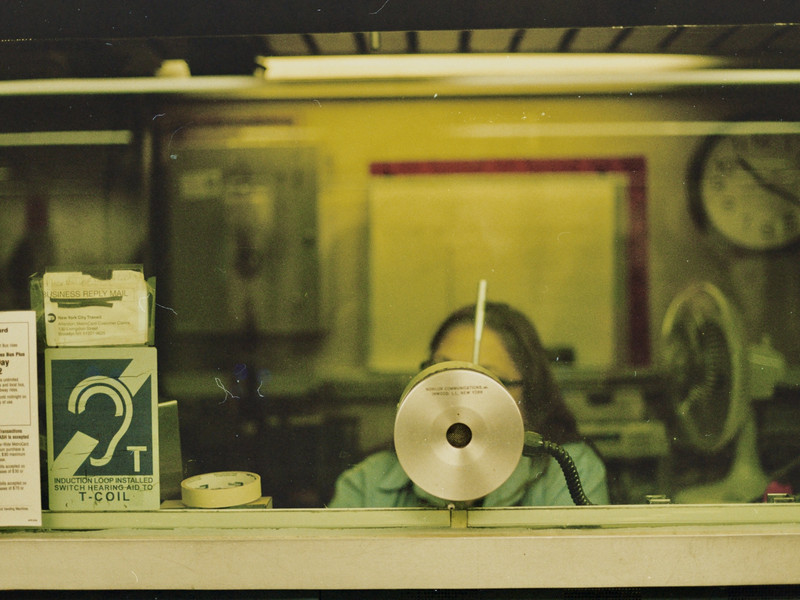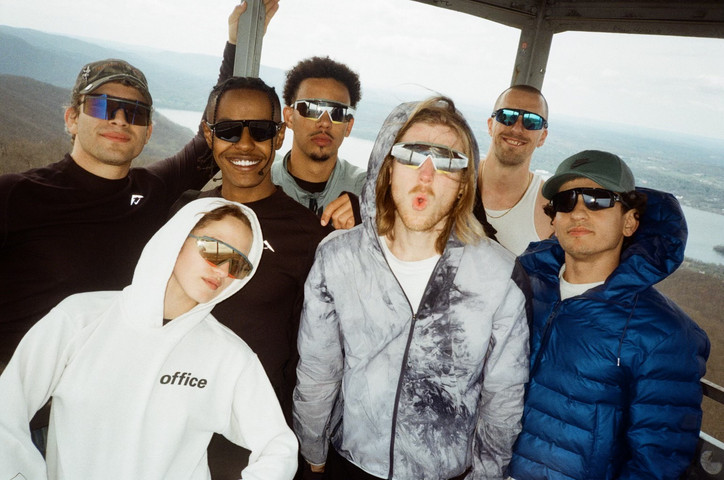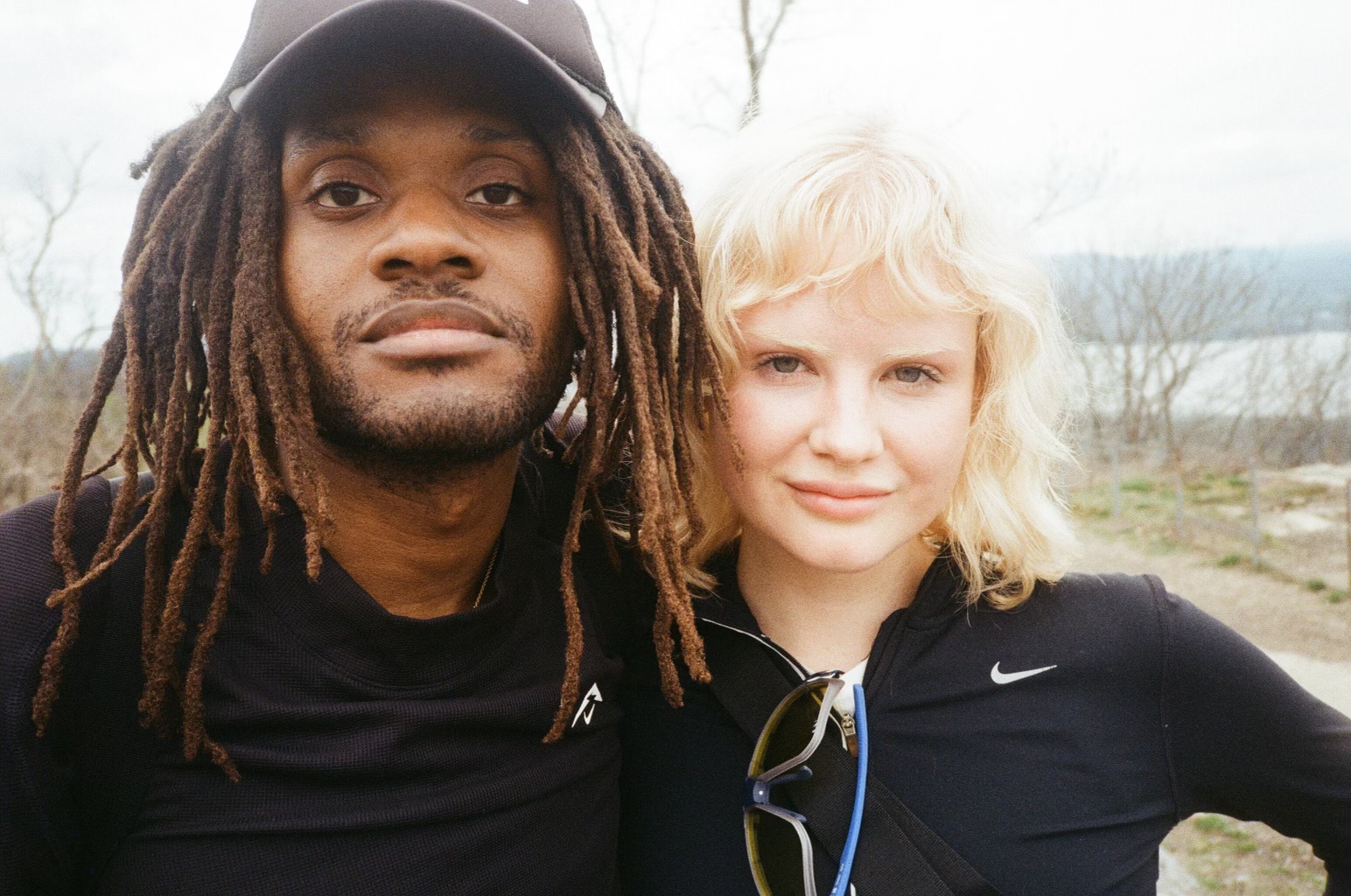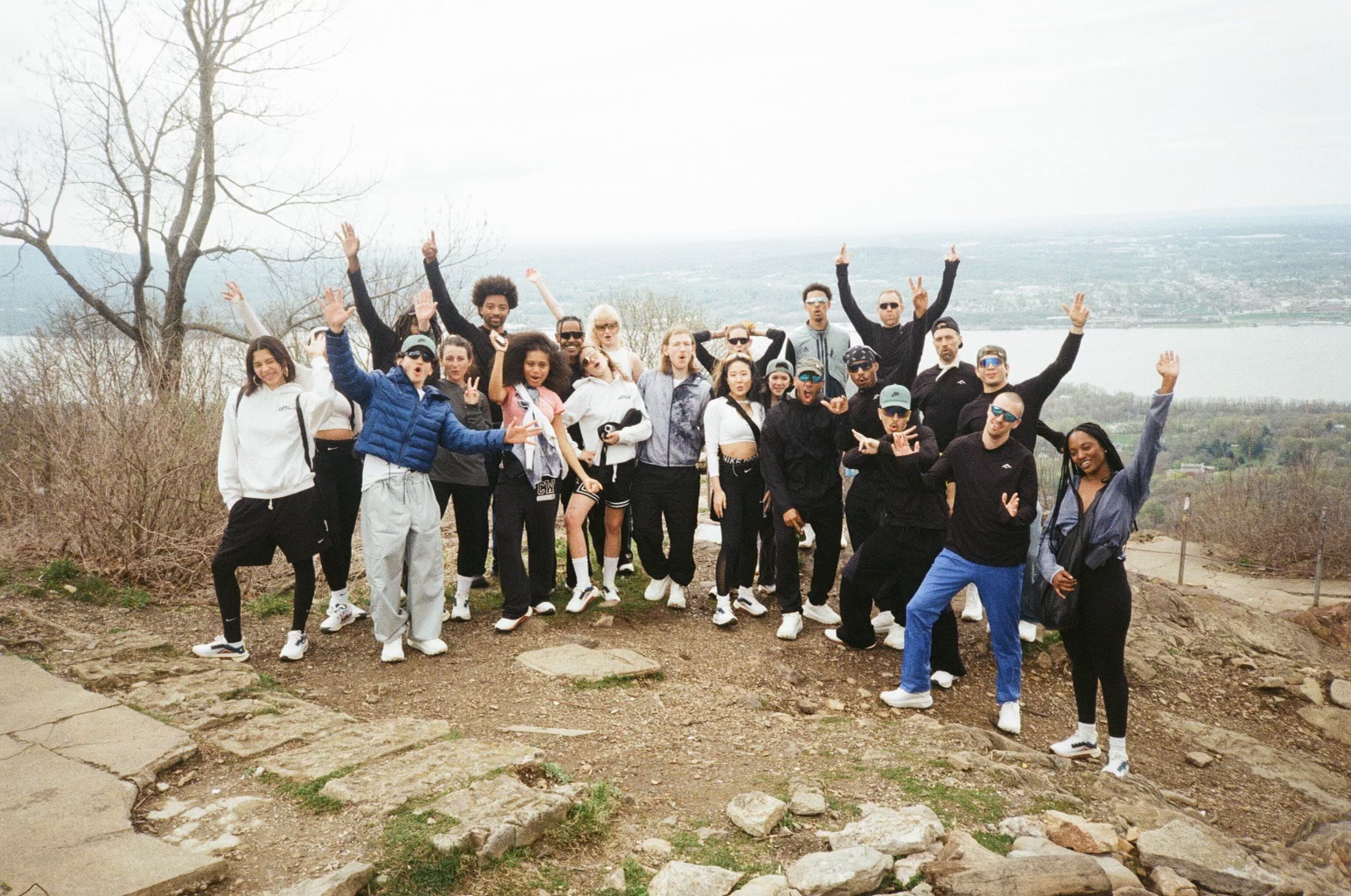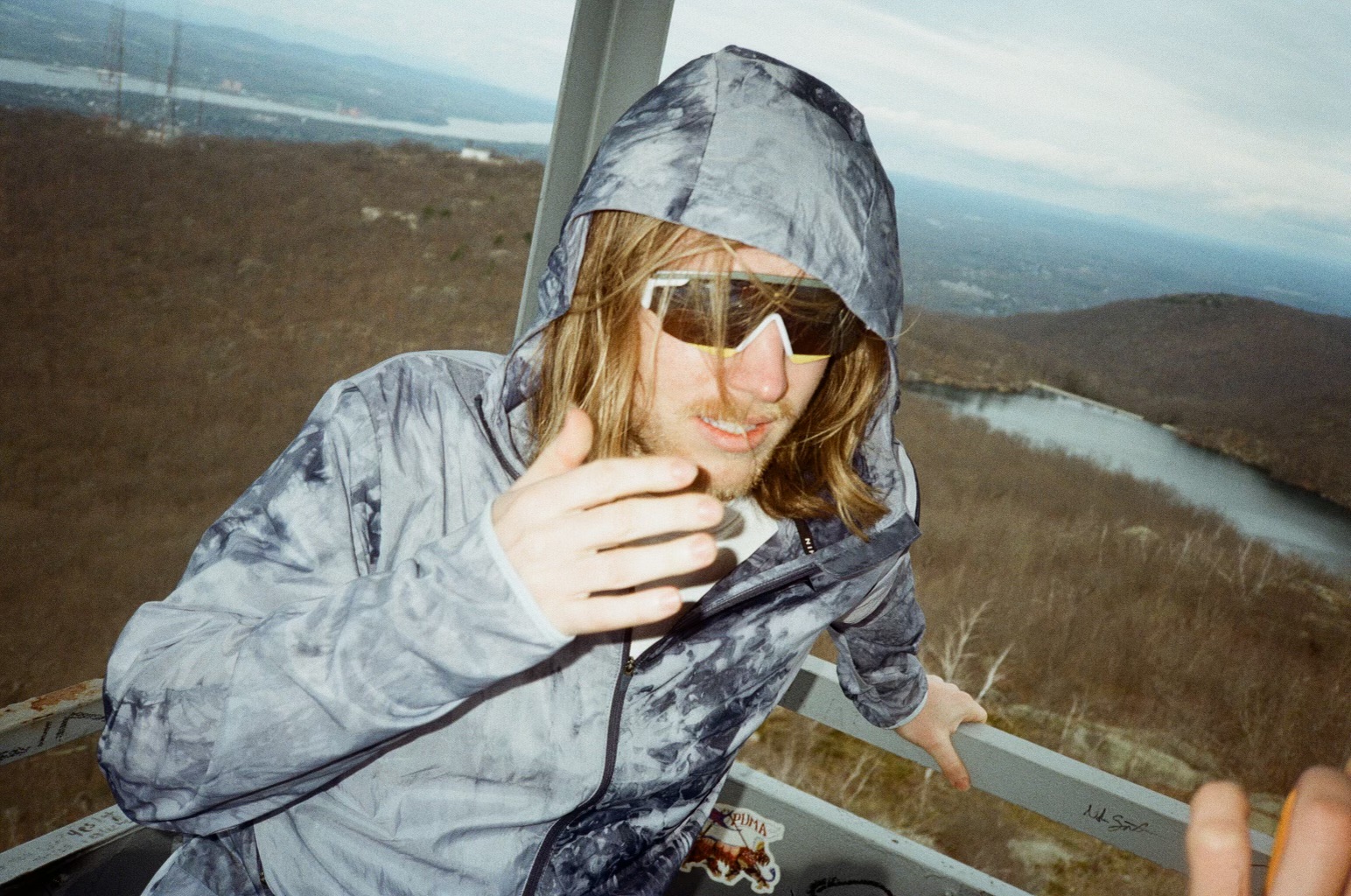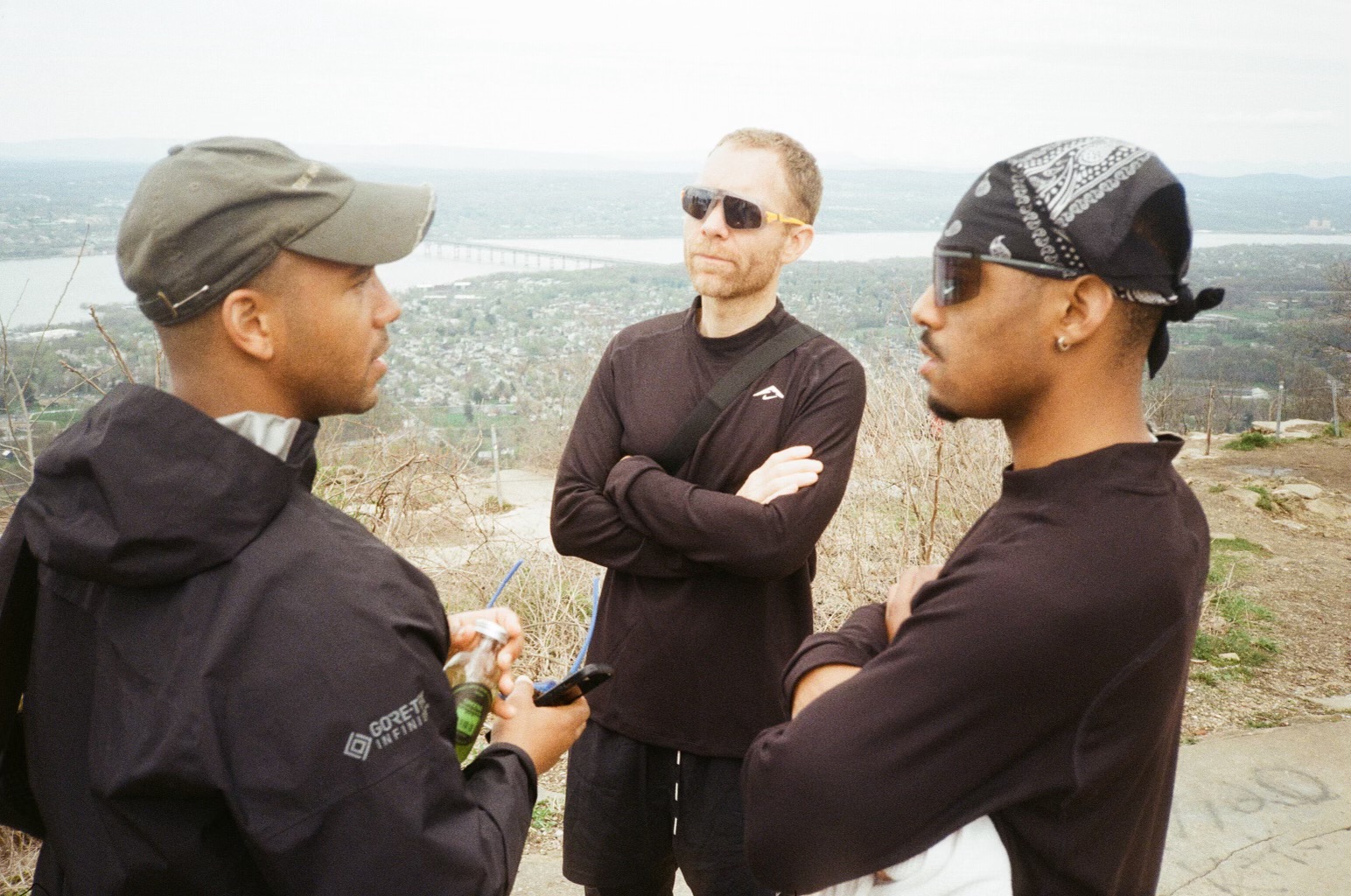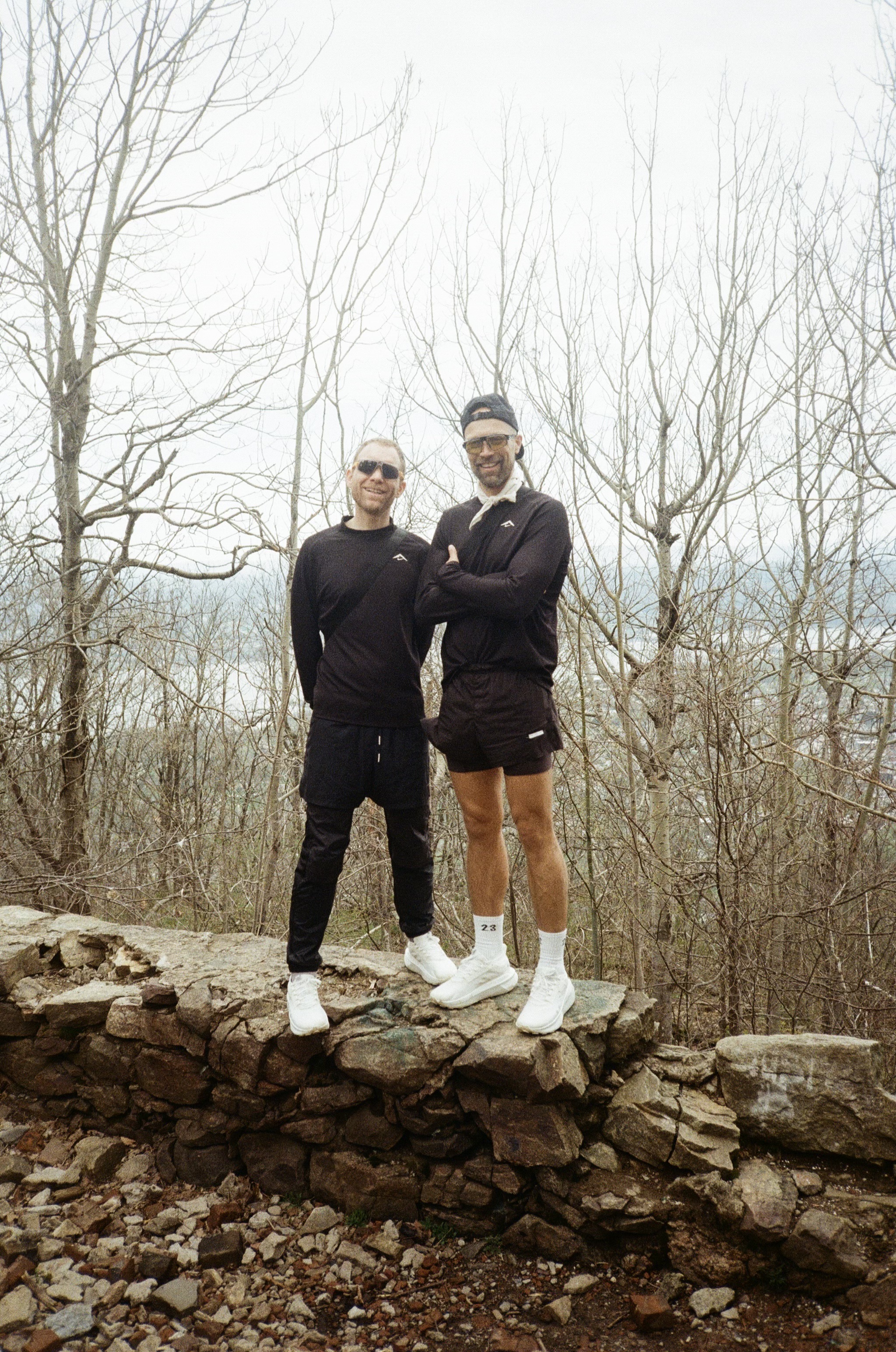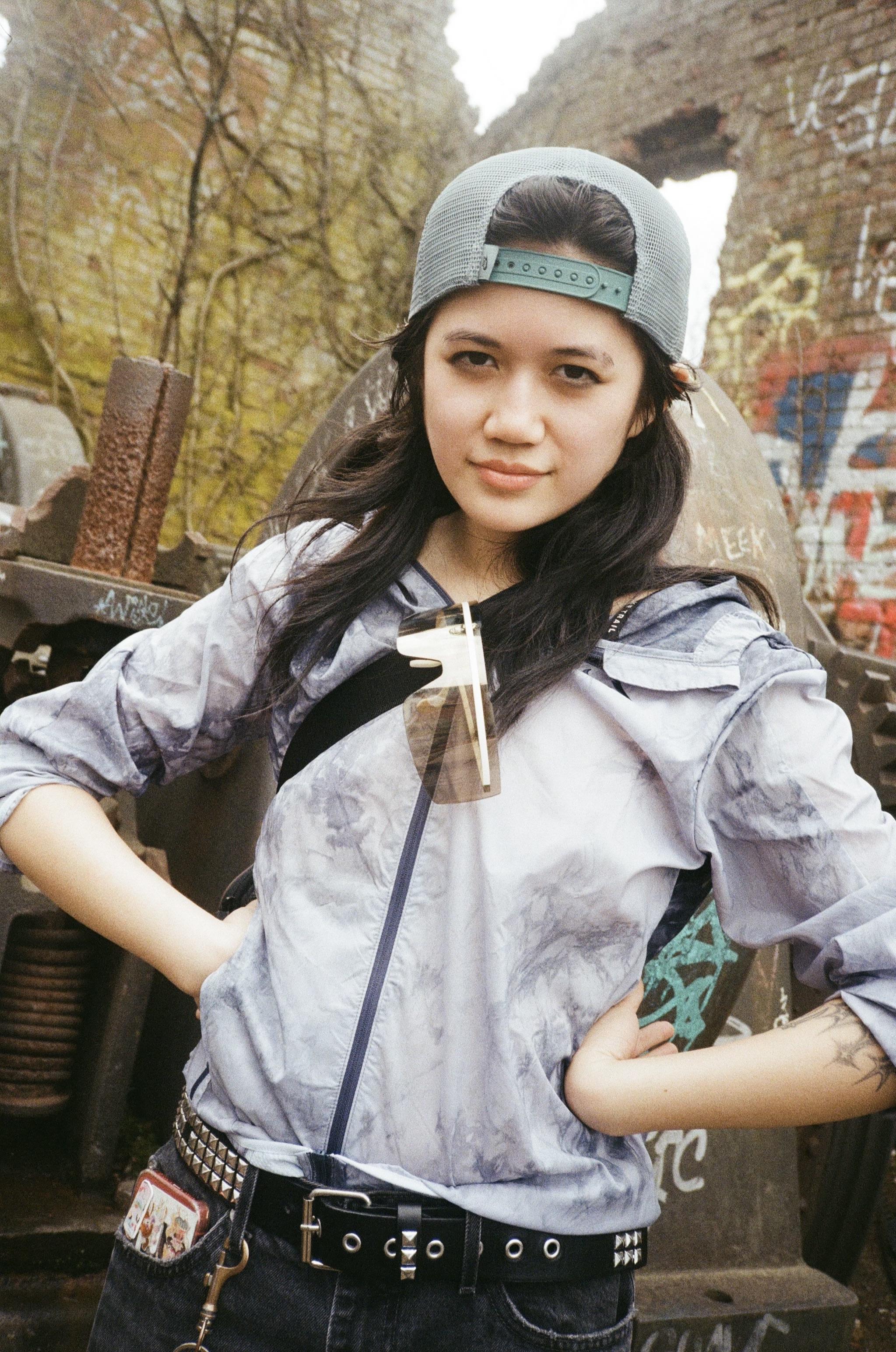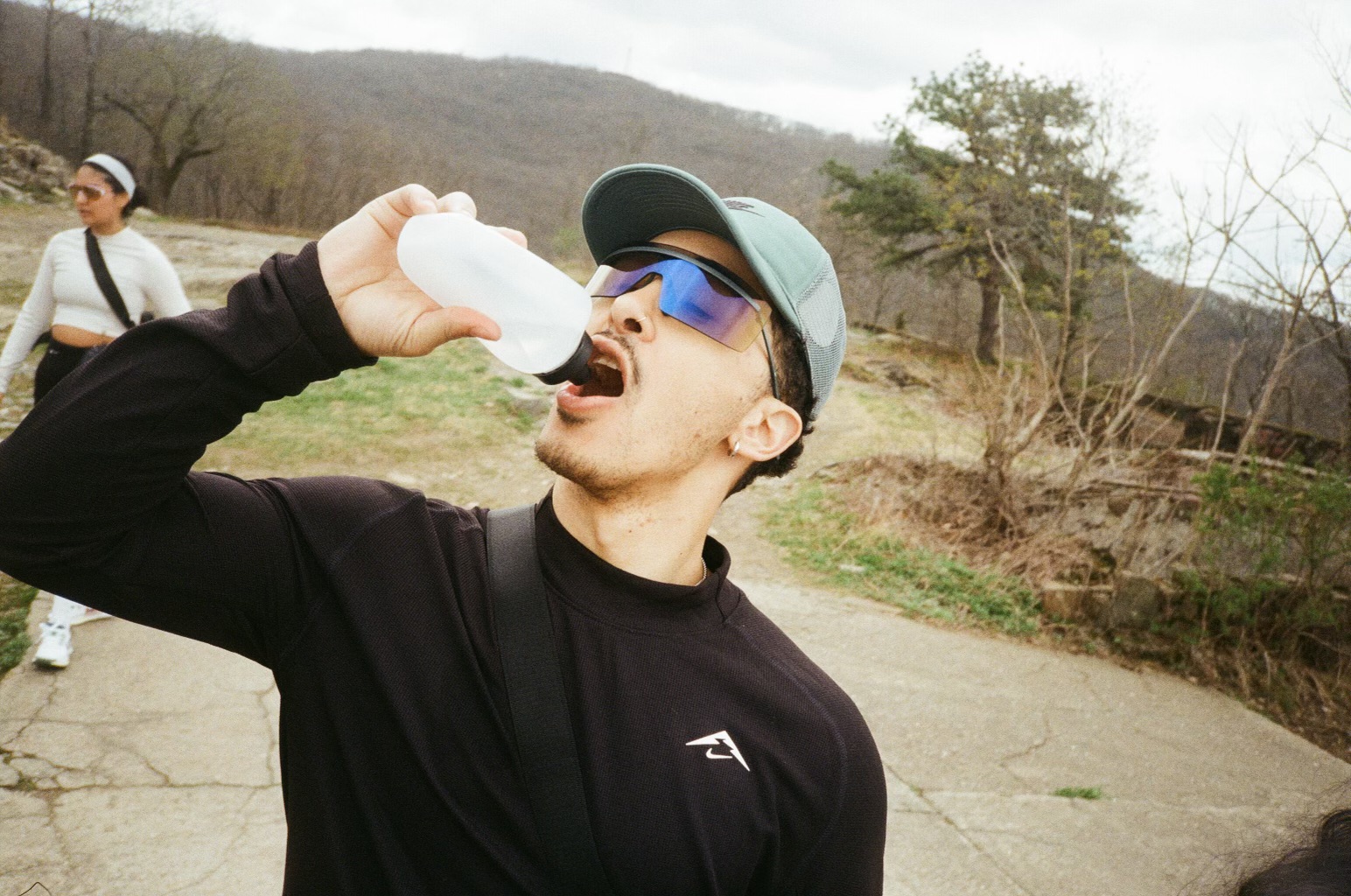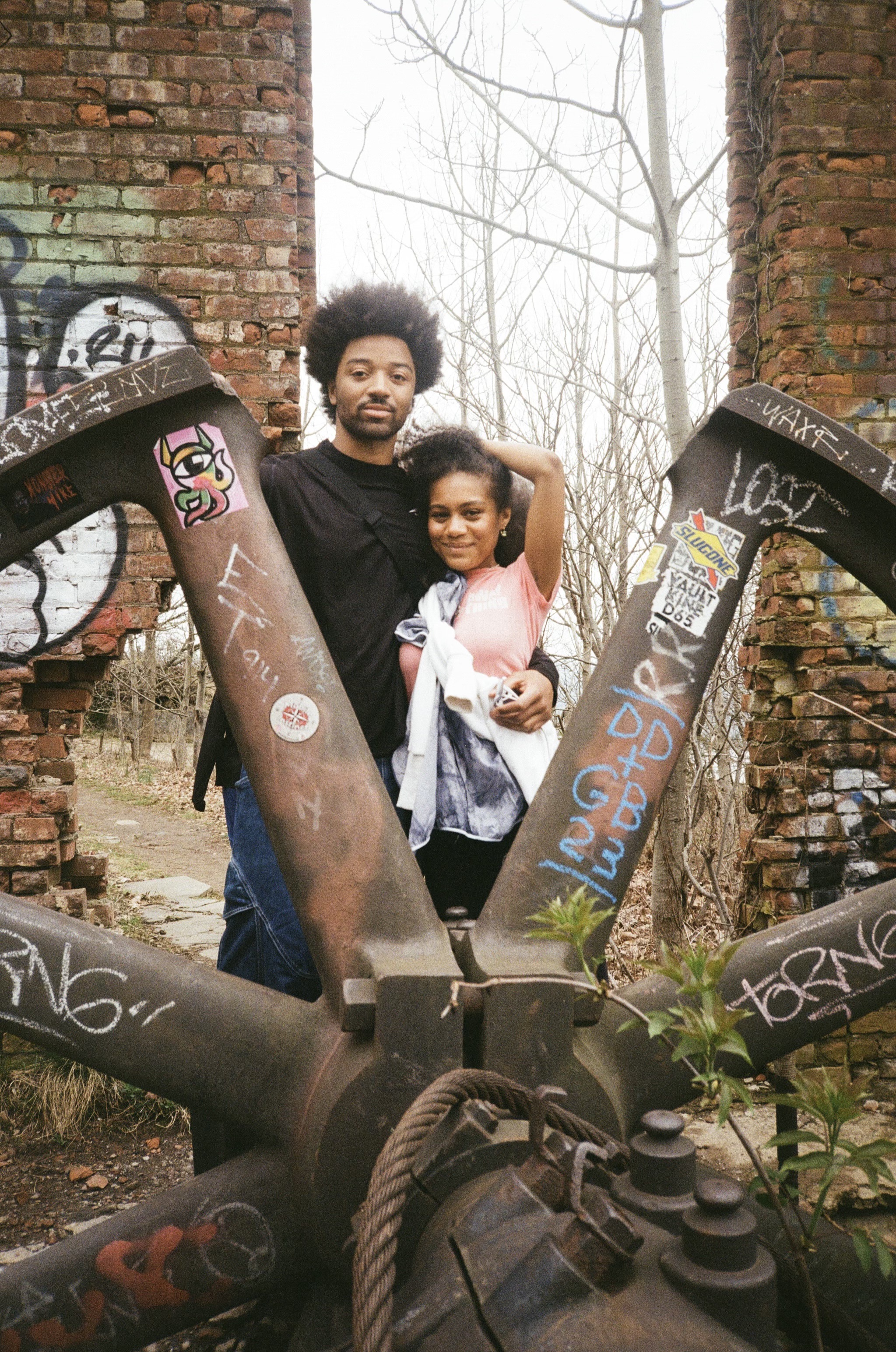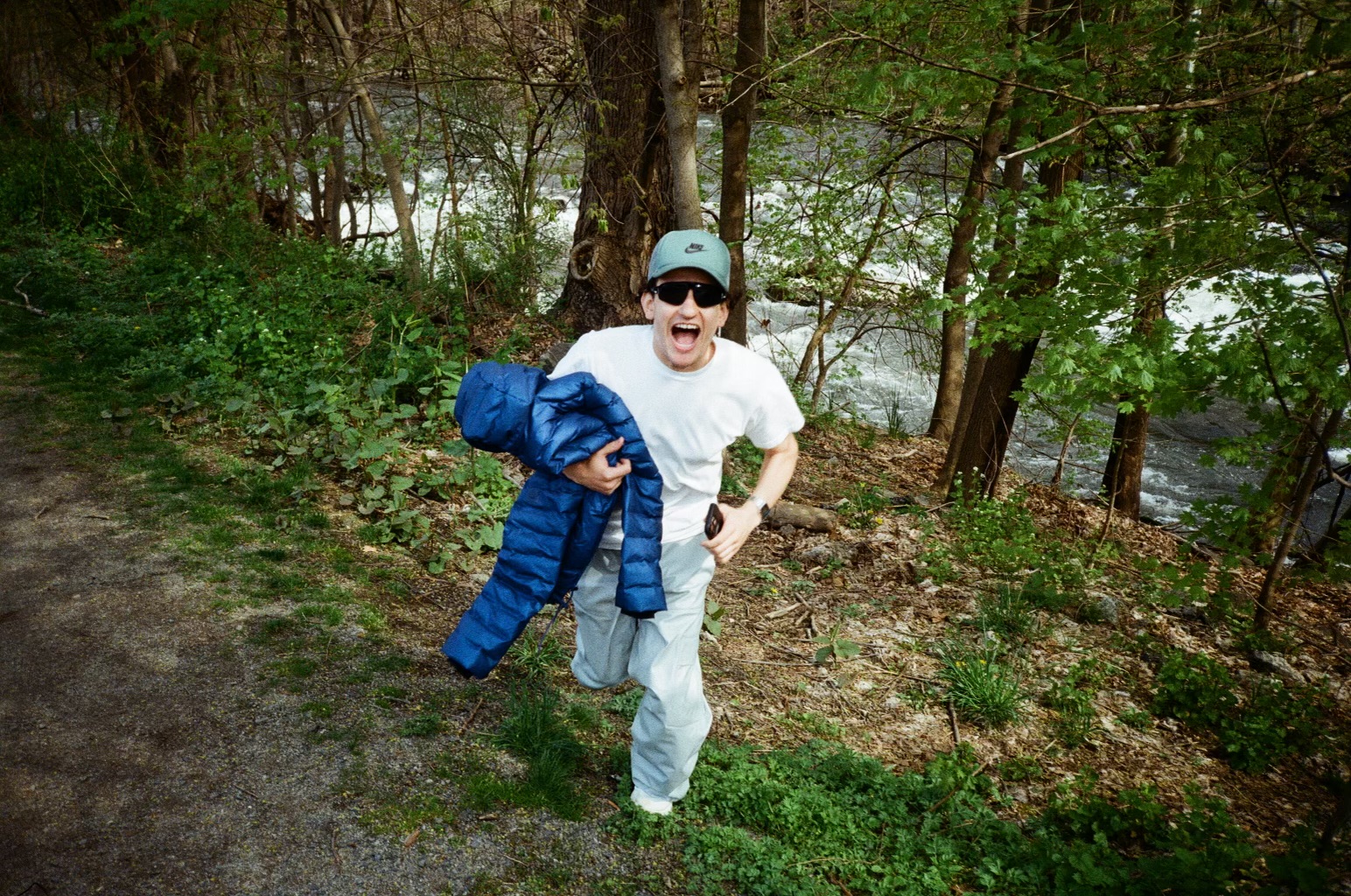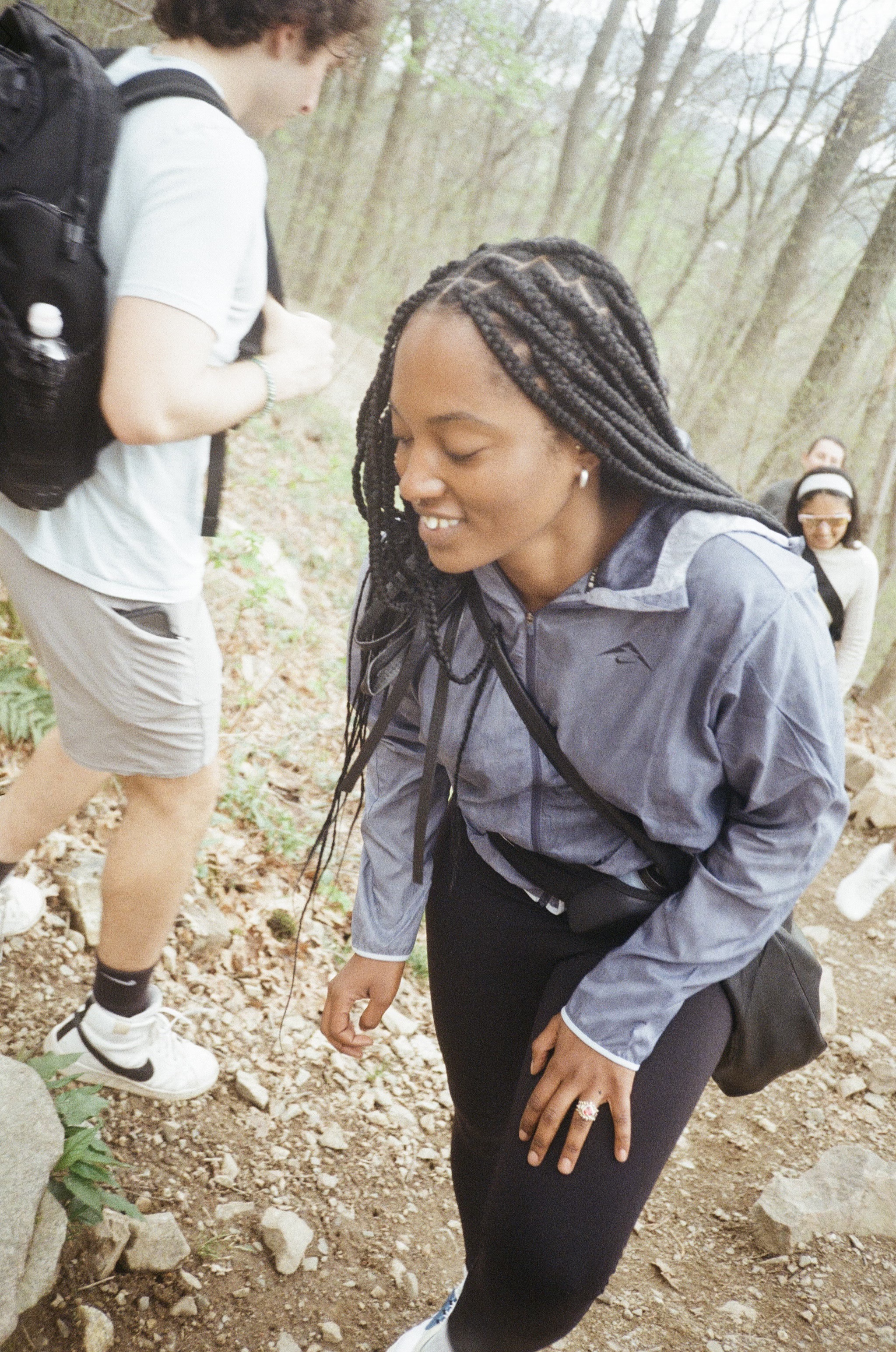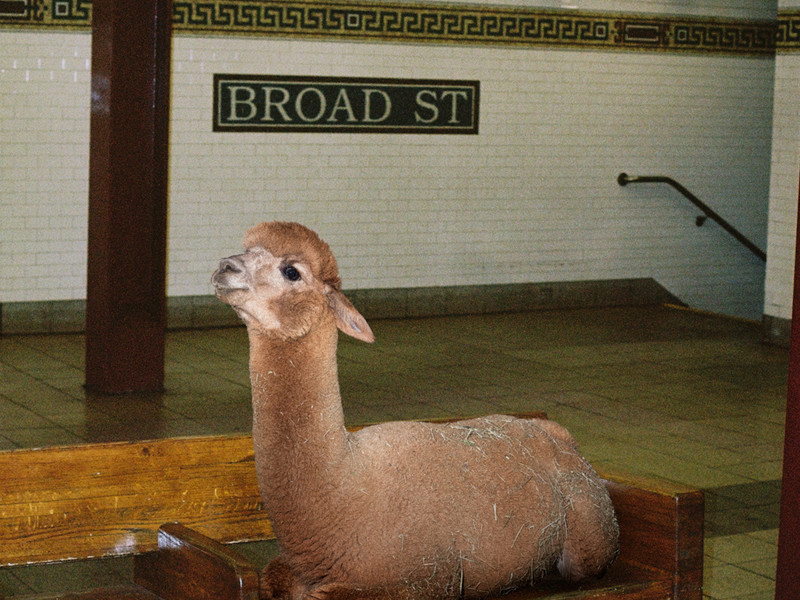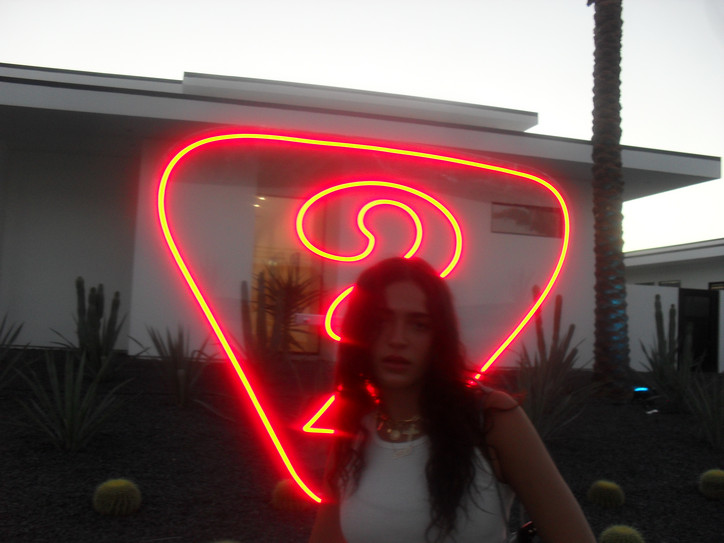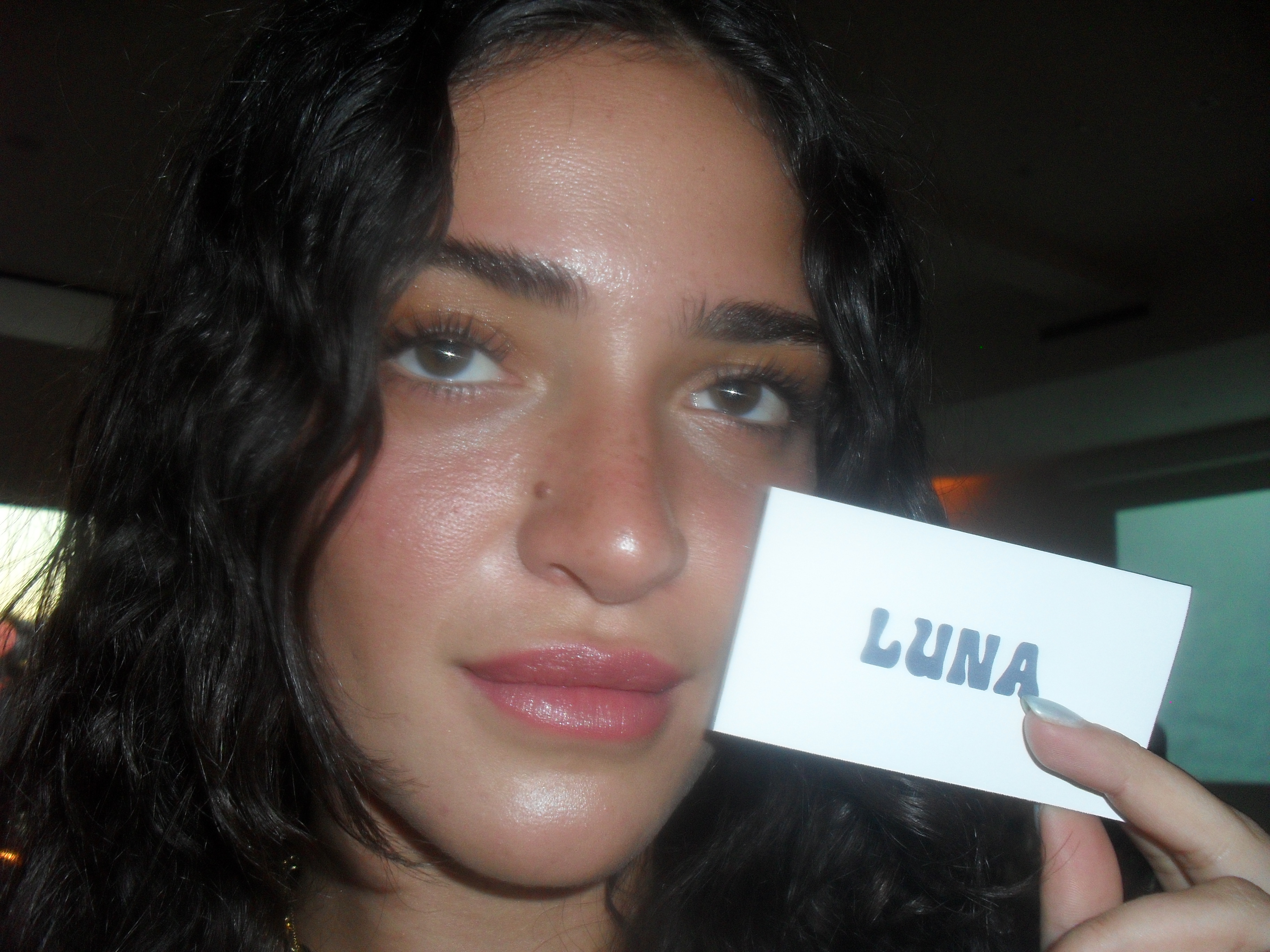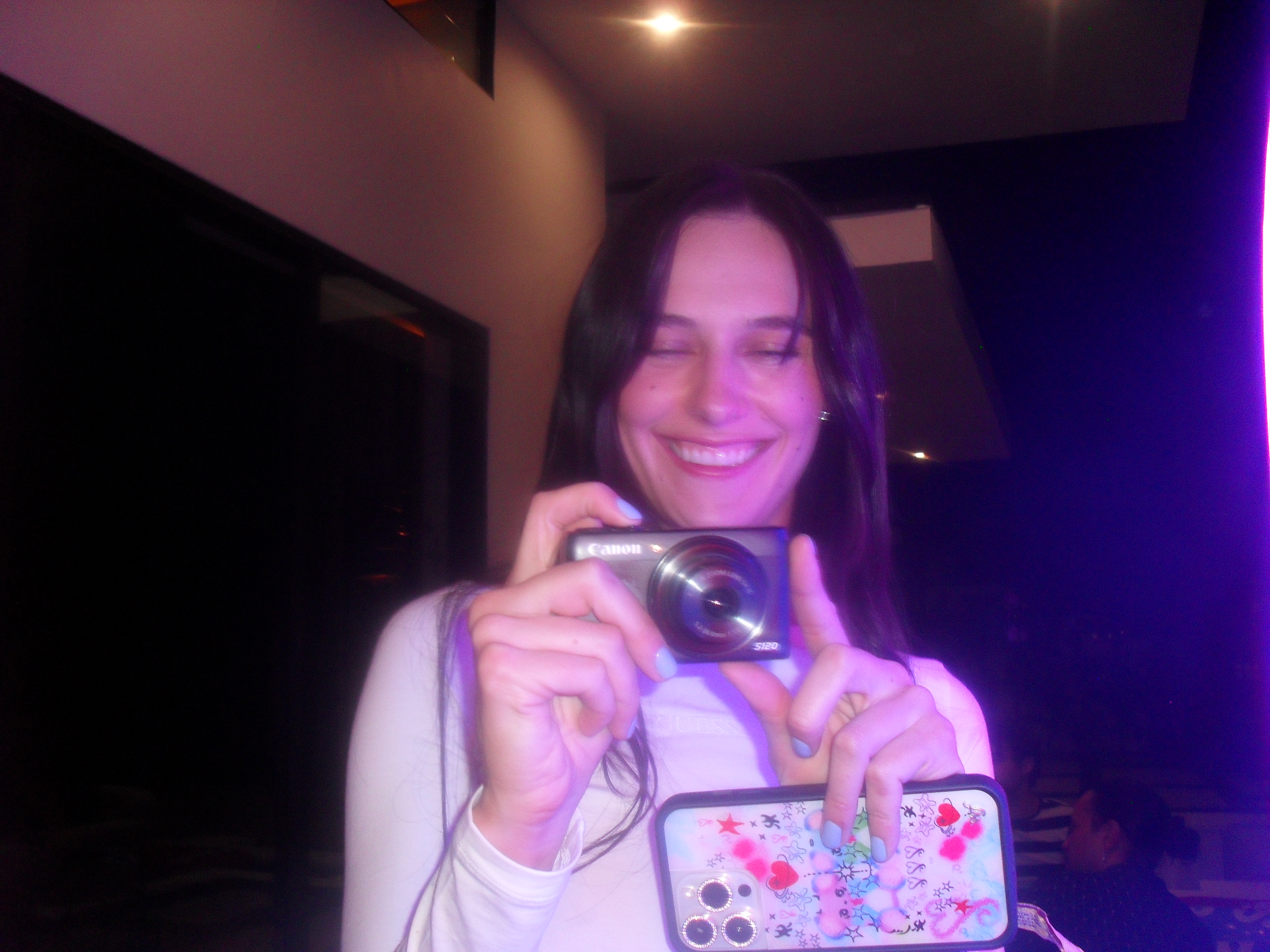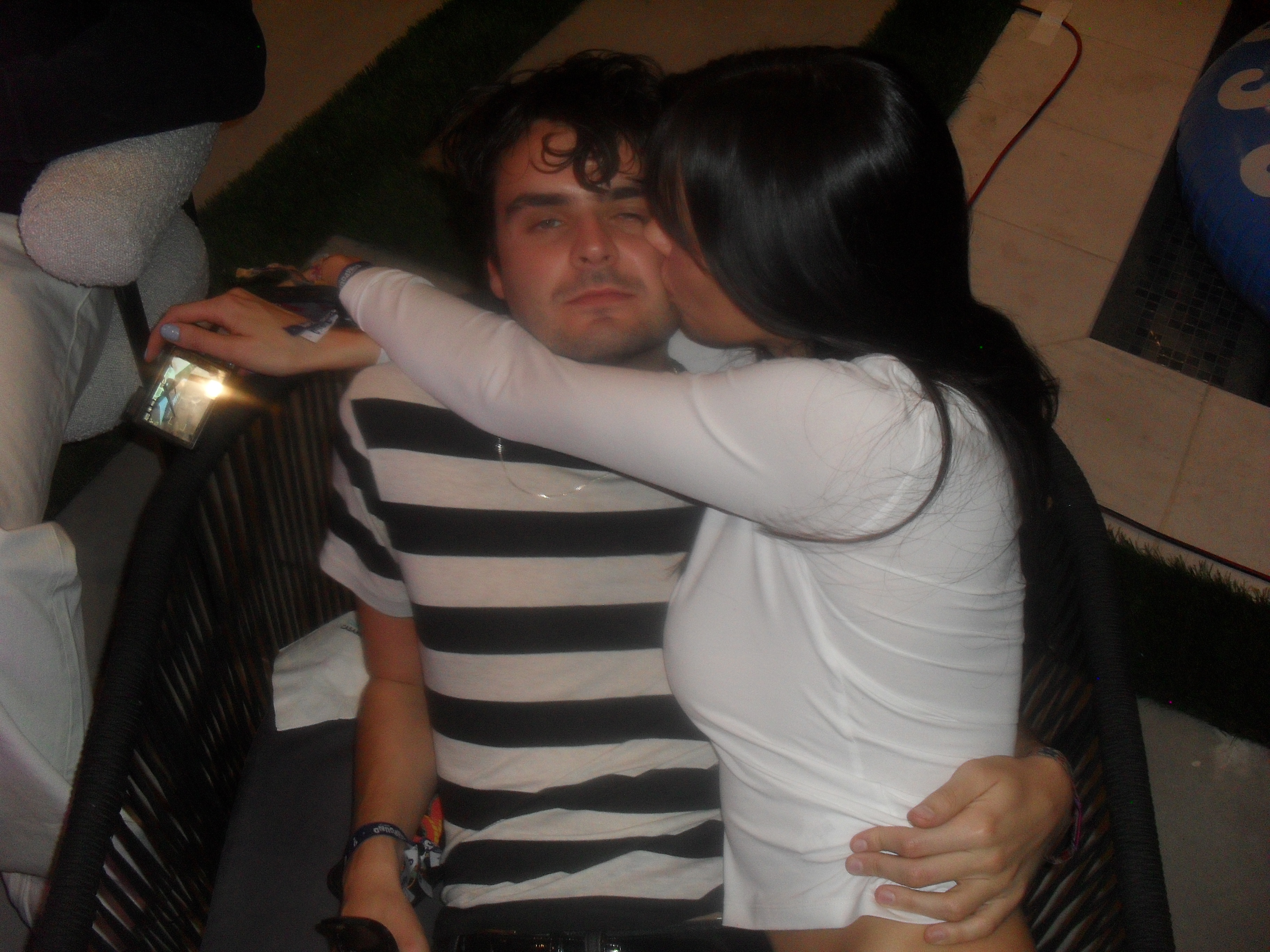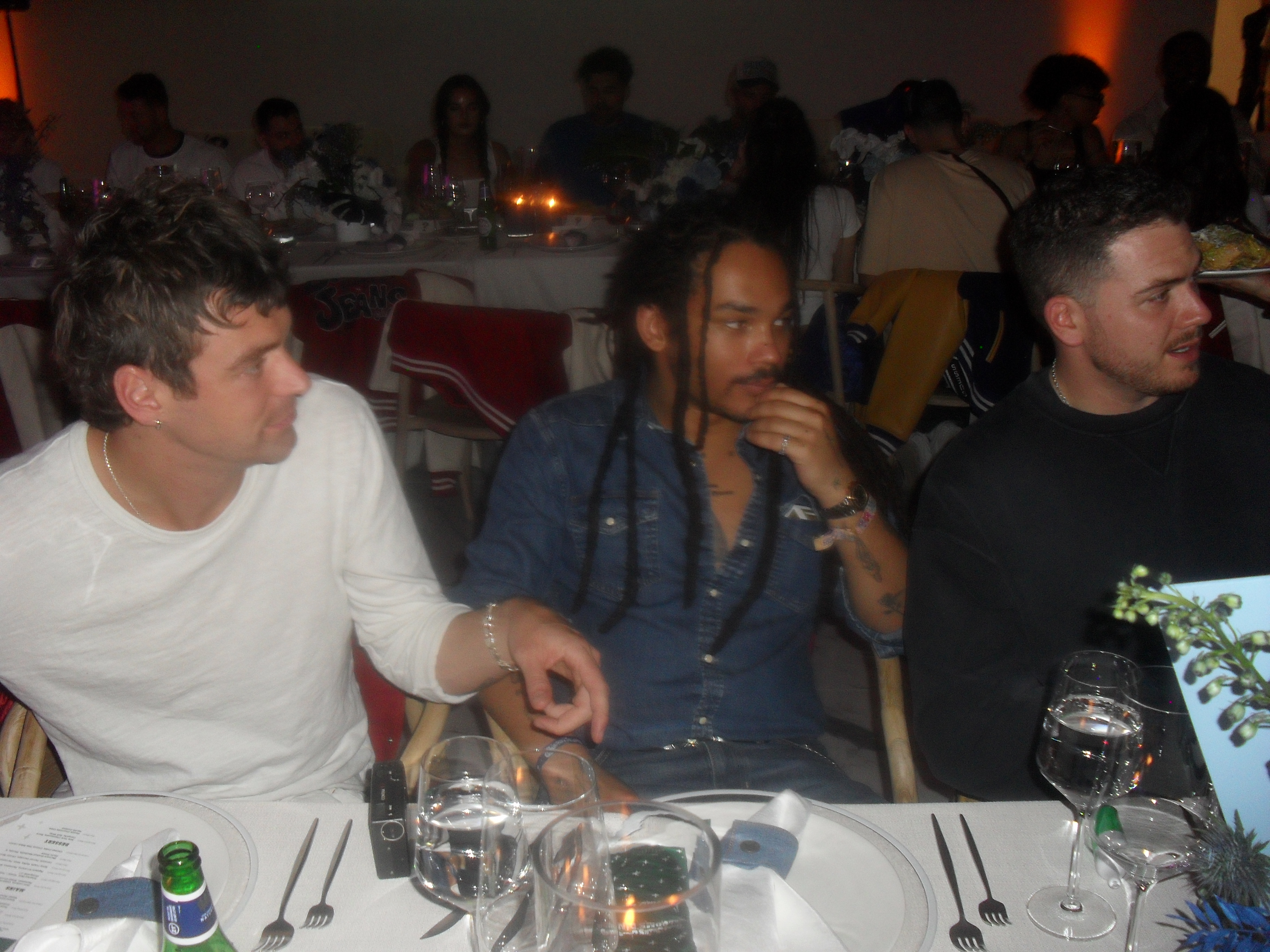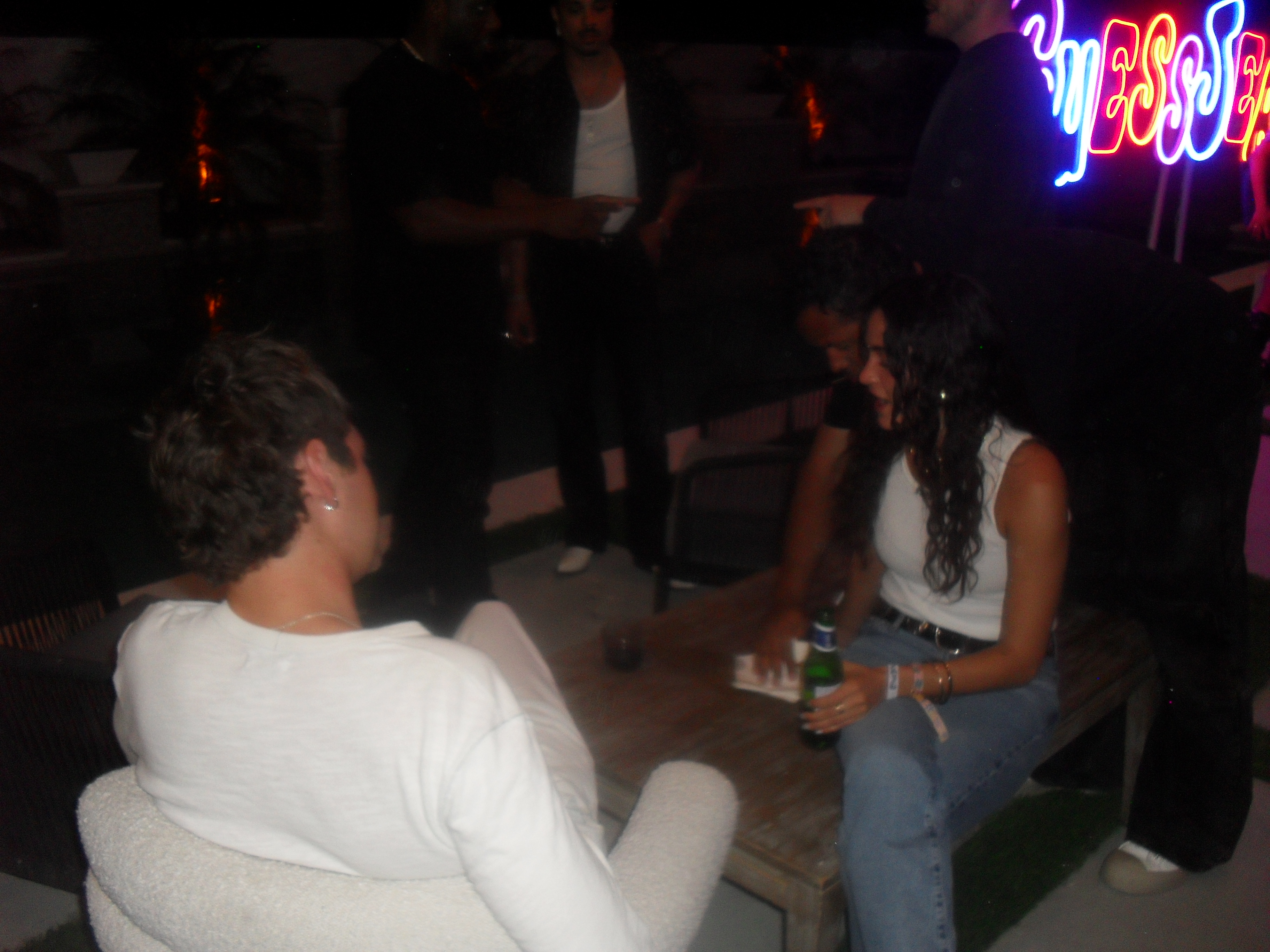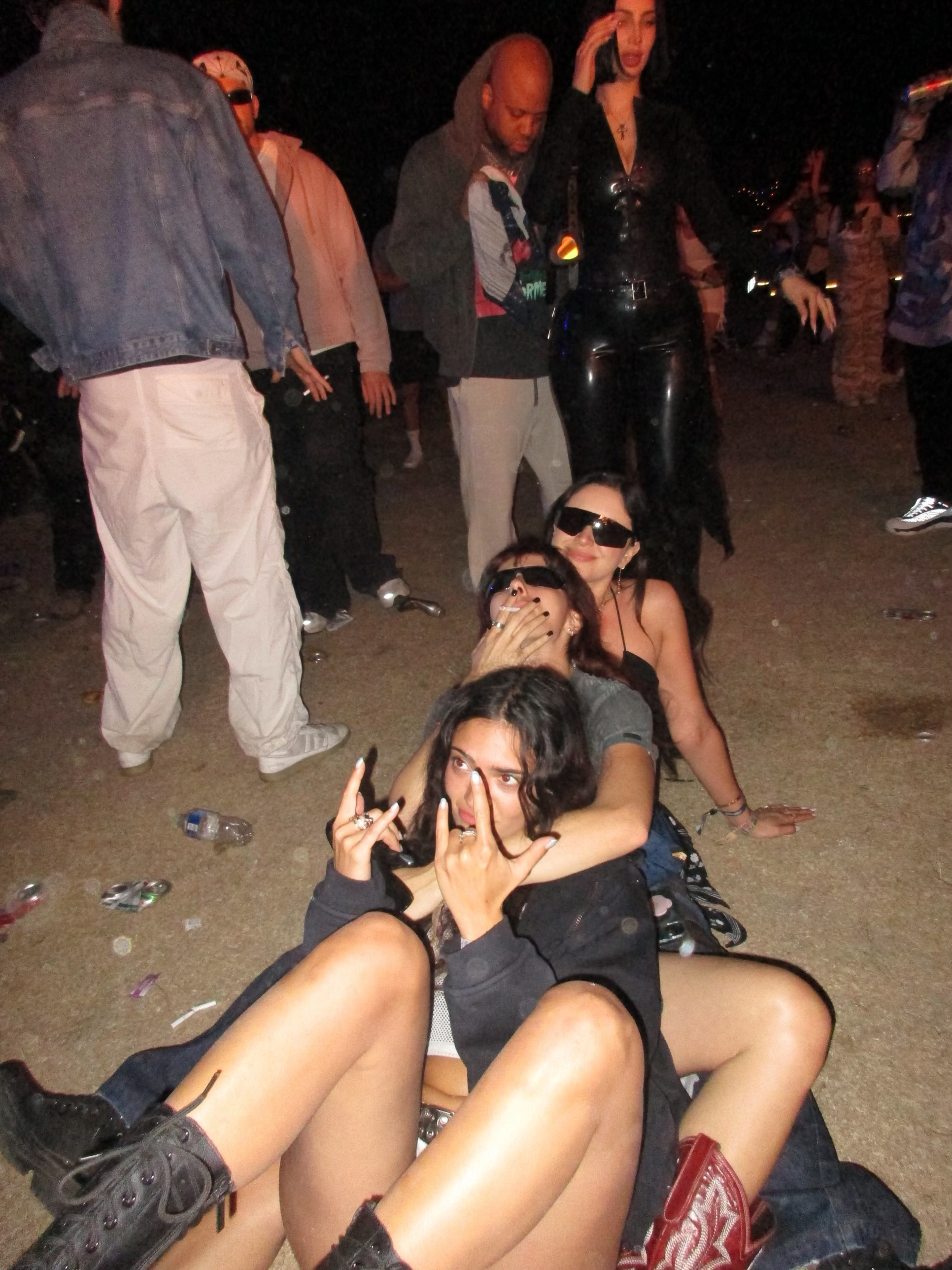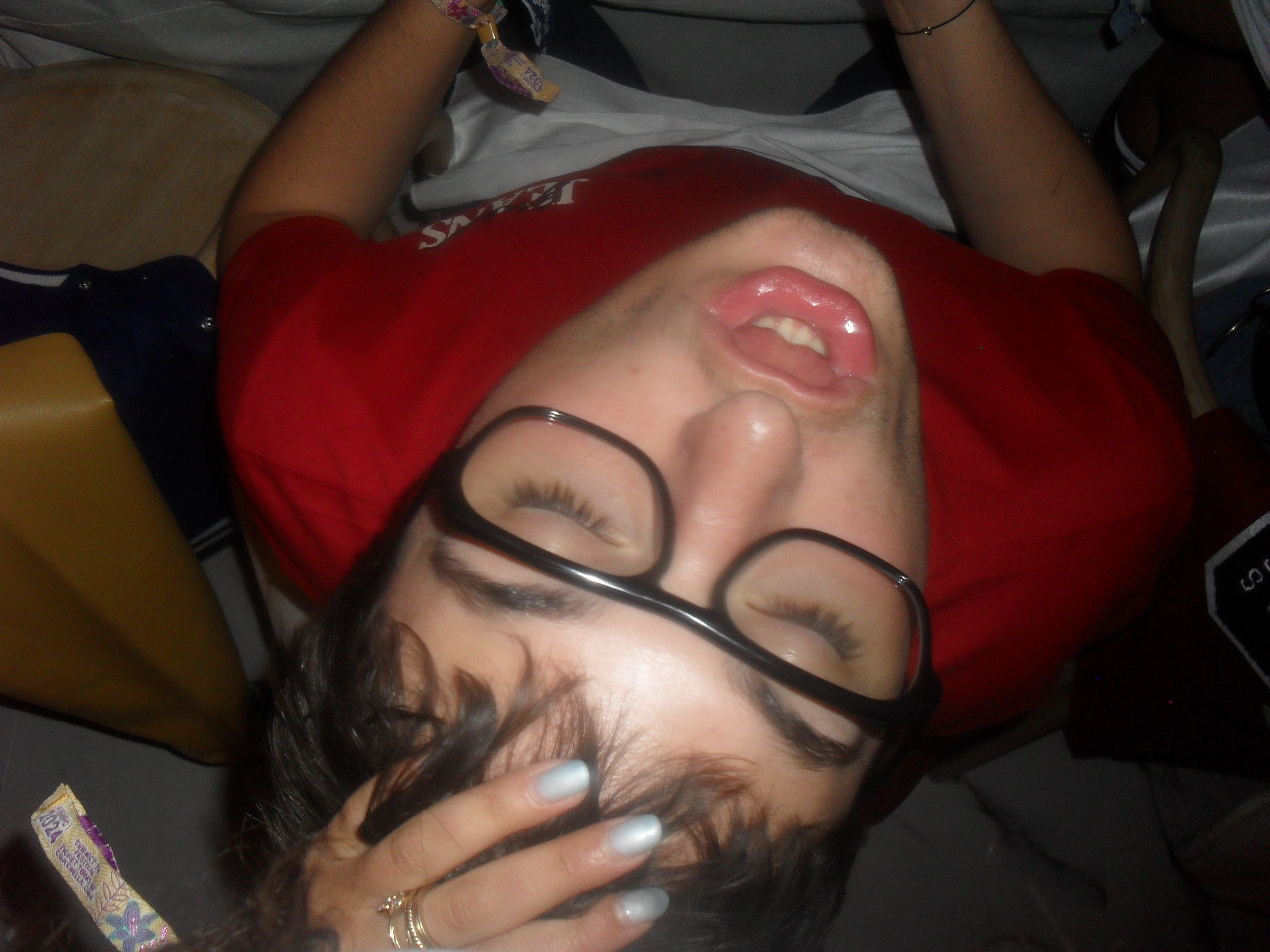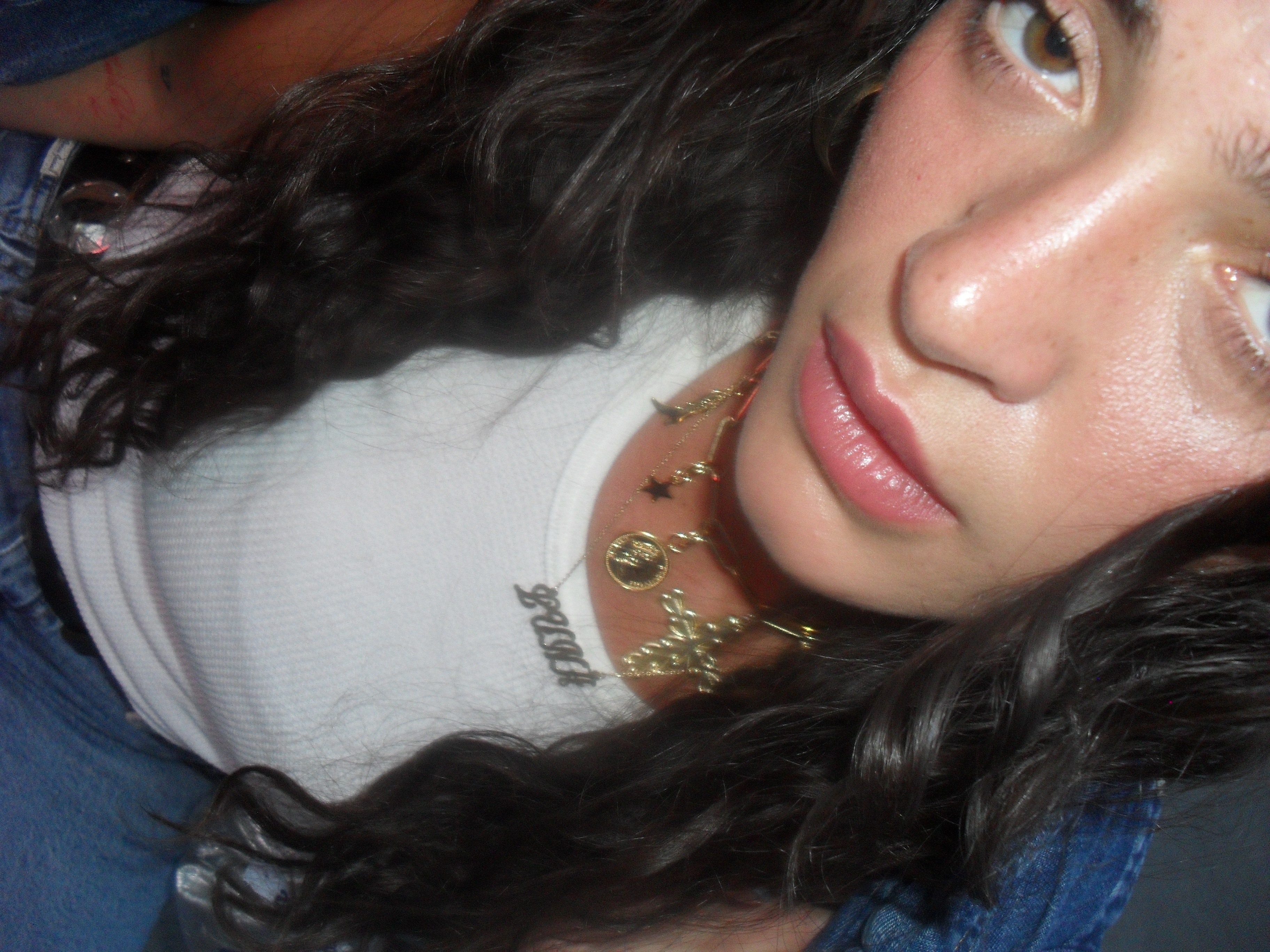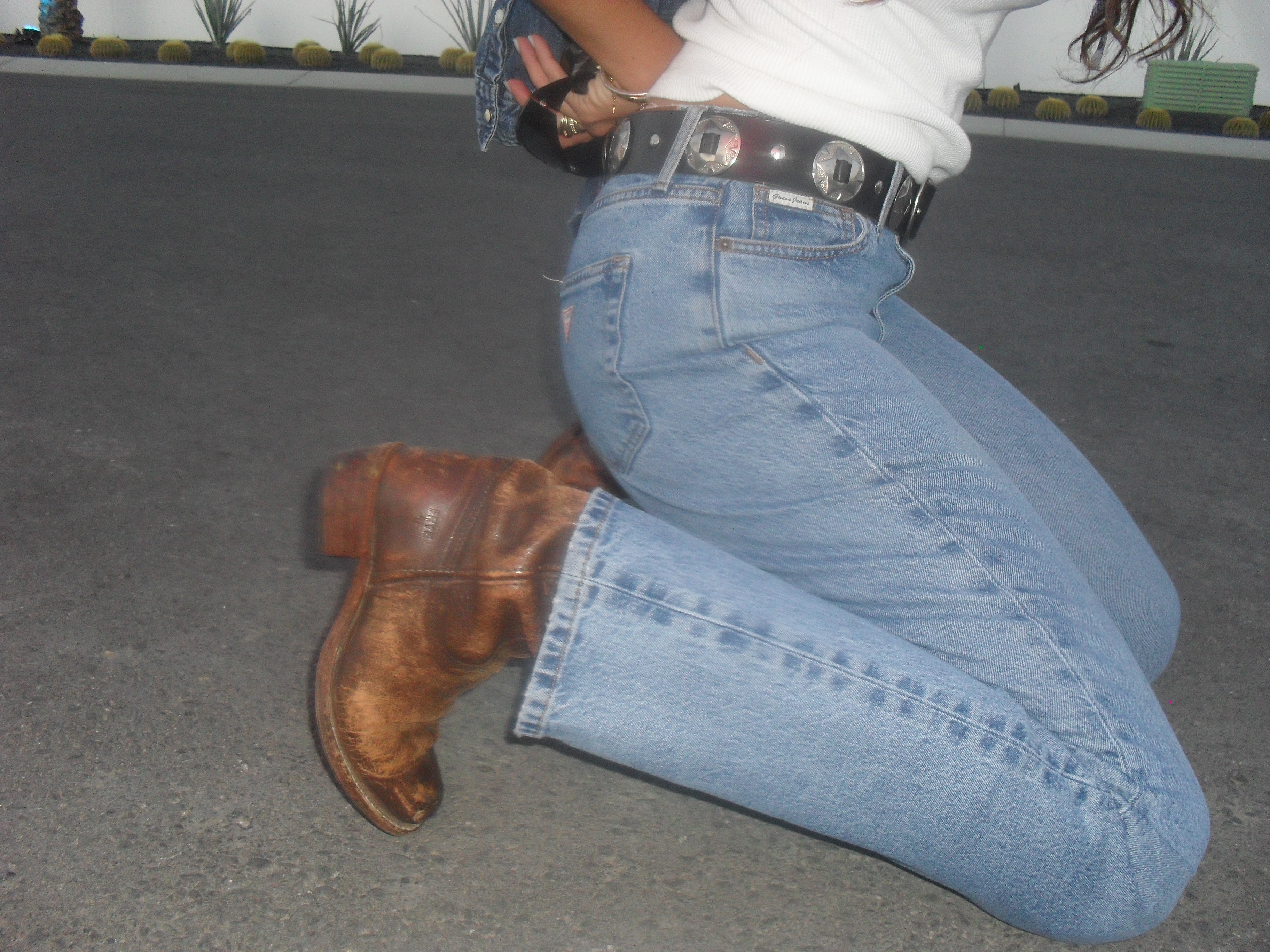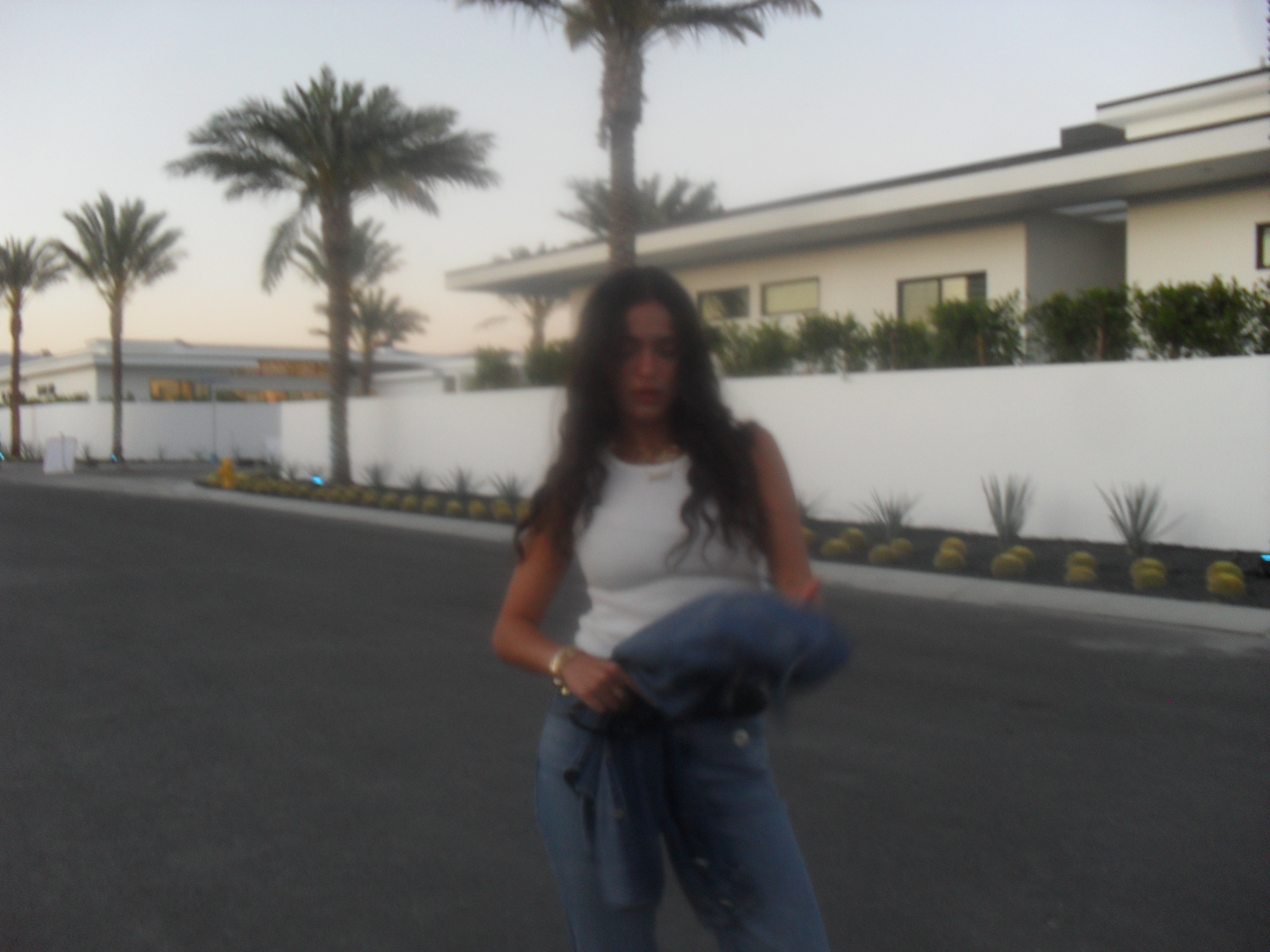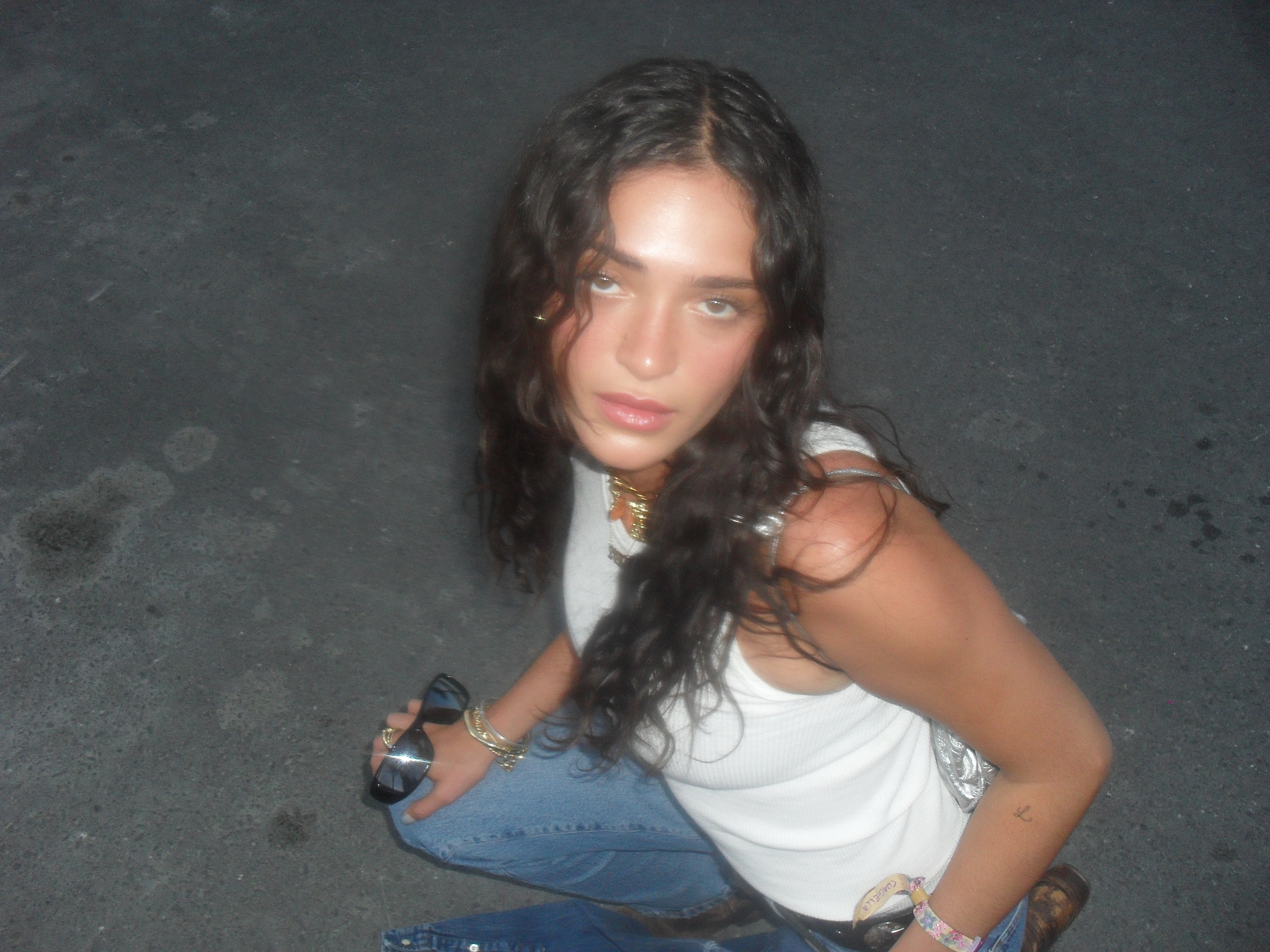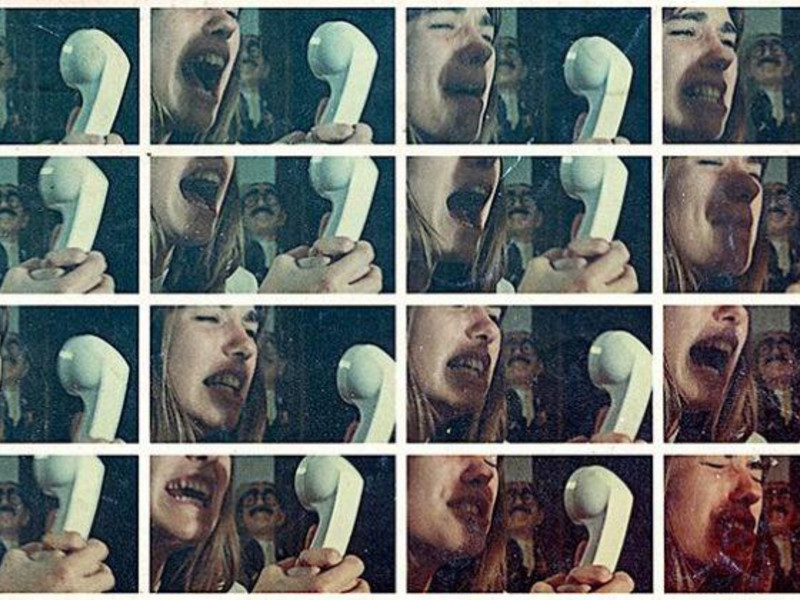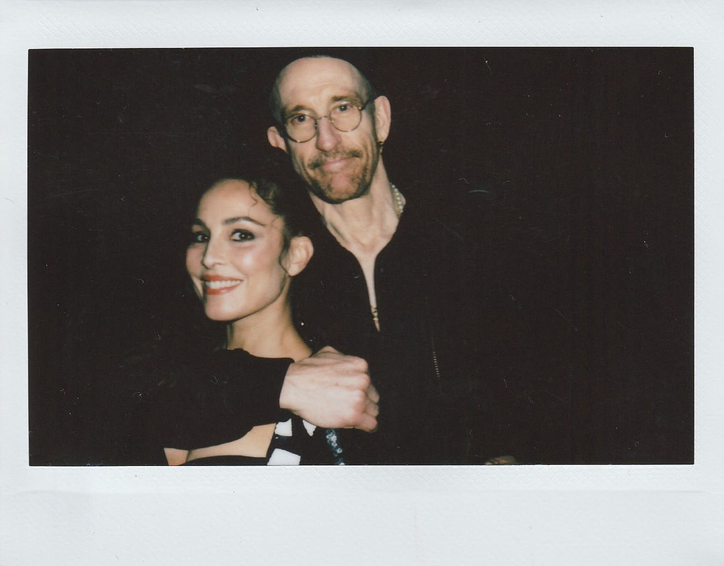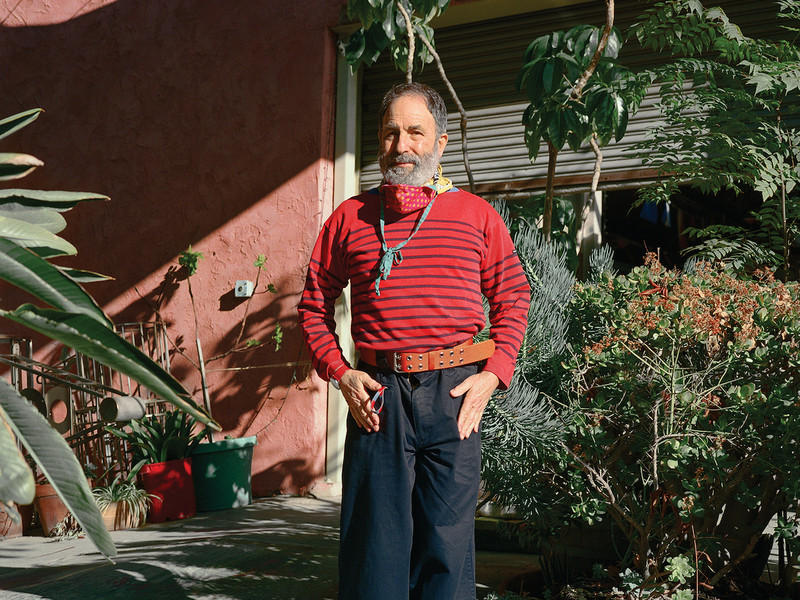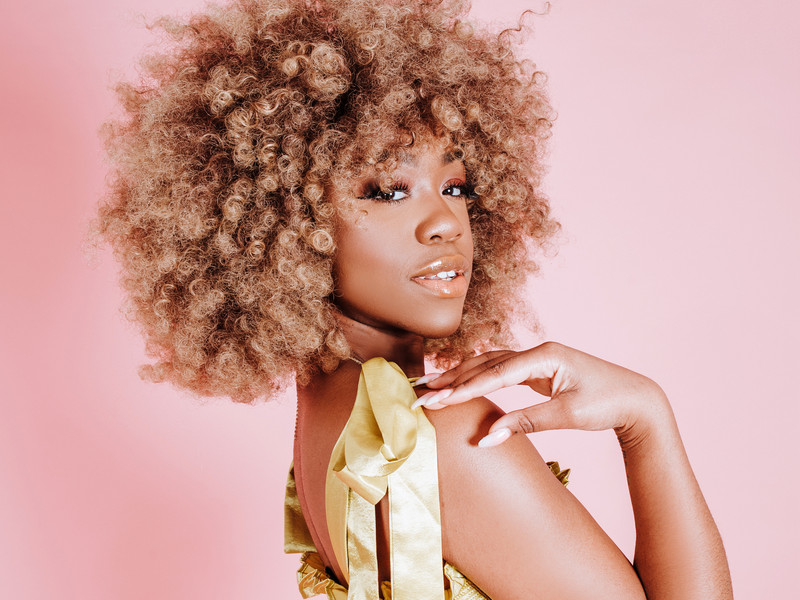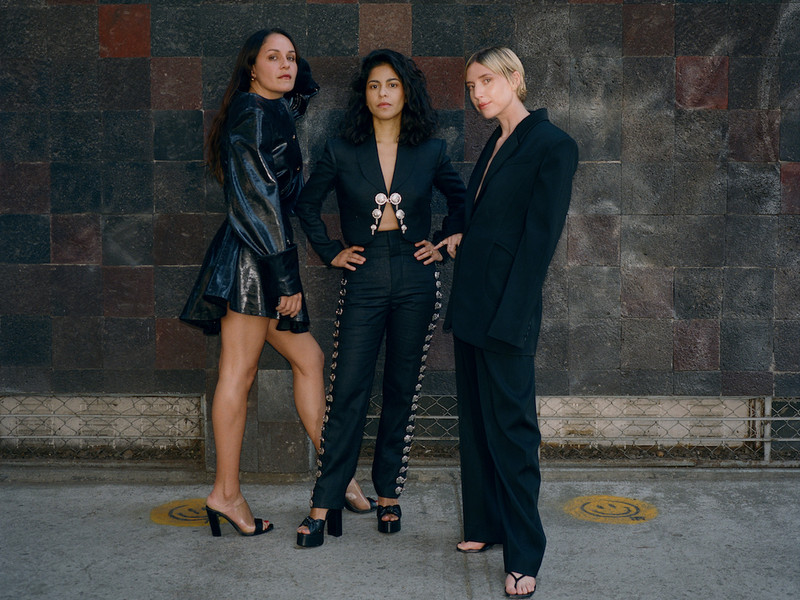From LDN to NYC: Intimate Portraits of City Youth

With social media, what has been your experience with how interconnected everything is in that you can find someone that lives in New York and work with them and then find someone in Berlin and work with them within seconds?
Evan Purdy — Yeah, I think that's super interesting about social media and being connected in those ways. I think there's a lot of negative things about social media and the apparent connectedness, but I think there are really a lot of benefits to it. This whole shoot was completely done through our phones. We were able to message people. I'd never met Dax before, but we had similar connections and we were able to look at each other's work and talk to each other about the job. And then we were able to cast basically remotely from our phones, finding people who live in New York and then being able to connect to them in real life through this app, I guess, which is pretty amazing. It's pretty insane. You couldn't really do that before.
Dax Reedy — You can be the most talented and creative person to ever walk this earth, but if you aren’t able to communicate among your creative peers who have the ability to help bring your vision to fruition, then your work and world is smaller than it can be. This is why I love using social media as a tool and a vessel for bringing ideas to the surface and bringing concepts to their fullest potential. Without my social presence, I would simply not have a career. You need to be able and want to be heard. But it’s just as important to listen. My time spent in London and Paris and the connections I’ve made using Instagram will forever be major. Indirectly, that’s how Evan and I connected.
Yeah, it's true. And beyond that, do you feel like being able to connect with people even locally enables you to have a quicker relationship with them?
EP — Sometimes I think it can give you a preconceived idea of what this person's going to be like, and I think that's actually a bad thing. Being connected is a really amazing thing. Being able to witness other people's perspectives from across the world is a really amazing thing. But I think the trouble with that is that sometimes you can think, you can kind of start to impart your own ideas, even though you don't really know this person. You've met them online and you've probably formed an idea of them. But this idea is always going to be quite far from reality, which is always way more complex and takes time to understand. Whereas the use in social media, it can give you the first layer of someone or the first layer that they present, but that's never really someone.
DR — As important as social media presence is, I stand with IRL. Knowing someone within their local context, and meeting them where they are really creates a mutual trust that the work will be dignified. The concept of creative fragmentation is really inspiring to me. That being, the ways in which the amount of people and the intimacy they share influences the final image. I love to work with my friends. We understand each other's visions and taste so deeply which allows us to have clear, honest and productive conversations when collaborating.
That being said, Evan and I got to know each other in a way smaller capacity via social media, since he was across the pond at the time. The first time meeting in person being the first day of shooting lent itself to a degree of fragmentation. Our energies didn’t seem to feel on the same page and I felt a bit of a push and pull between us that took until wrapping our first model to settle. This disconnect was reliant on our lack of trust within each other and lack of time knowing each other. Thankfully our team consisted of me, Evan, my assistant and dear friend Jack who I’ve known for five years, and our gorgeous model Nissi who I scouted a few years back on the street in New York. Being local and already acquainted allows a sense of comfortability that is established before walking onto set and thus less room for error while working. I feel like I can think freely and express ideas in a more organic way. It definitely took until our next models Alex and Josi, after shooting Nissi, to feel that sense of comfort with Evan. It felt much more cohesive and aligned when agreeing on the styling for Alex and Josi.
Alex & Josie
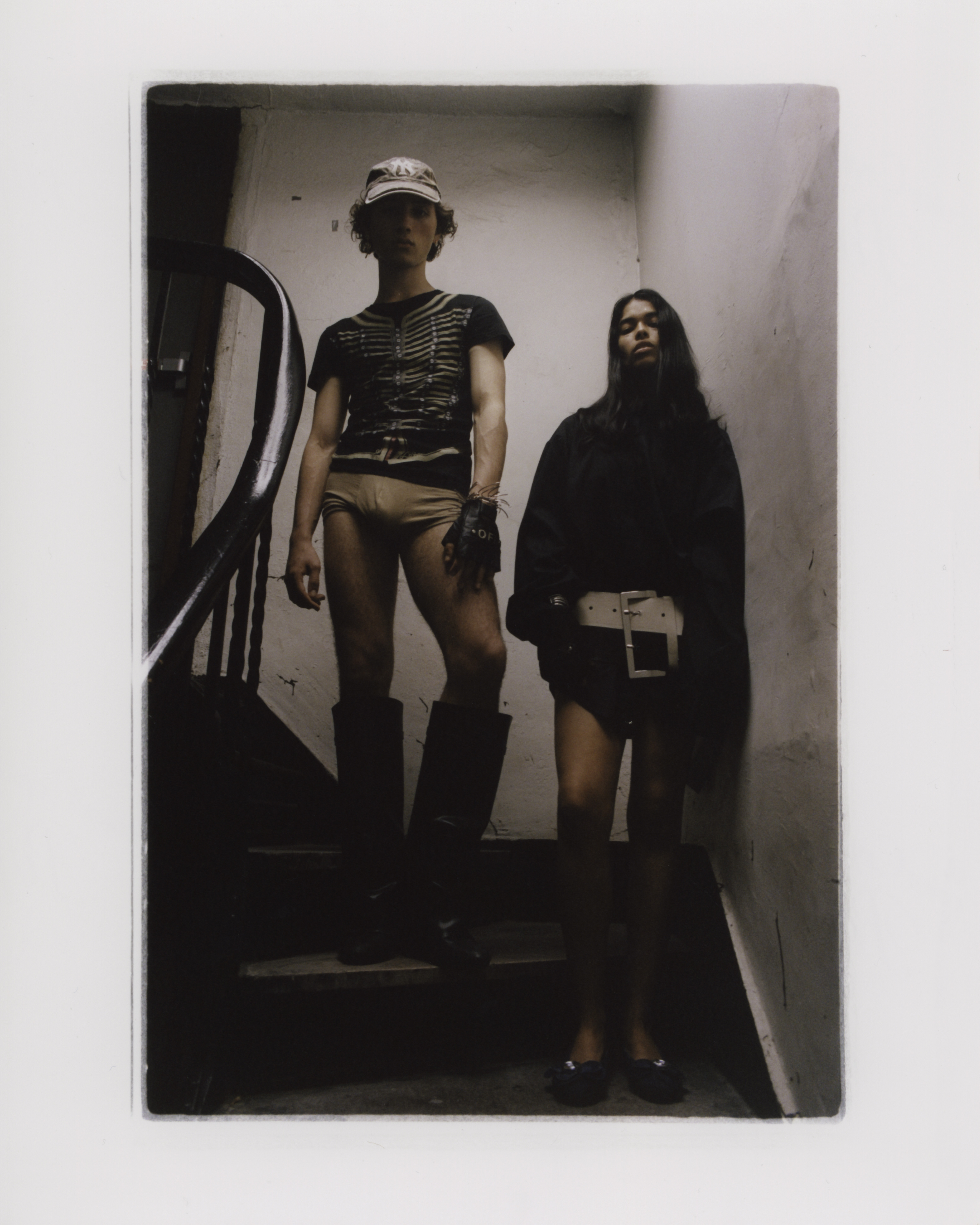


ALEX wears stylist’s own hat, glove, and boots. Bracelet by DION LEE, and SHIRT by GALLIANO (SS2008 Menswear) from Allison’s Archive
JOSIE wears SHIRT by THE CORNER PASSED, SHOES by AREA, BELT by LARUICCI, and stylist's own GLOVES
Would you say your practice is a way of breaking through those layers, those stories we tell ourselves and others?
EP — Yeah, massively. I've actually met so many people who are so close to me in my life now through photography, through that really intimate exchange of trying to capture someone's image. When it's done in the right way, I think it can really lead to a great relationship just from having that first instance of really getting close to someone, having someone feel like they've actually been seen properly and maybe even heard. And I think that can really spark some really amazing relationships, which for me, I've got now just through photography, which is so nice.
DR — I agree with Evan that my craft has allowed for some of the most important relationships in my life to flourish. My closest friends are the ones I’m constantly creating with. By breaking through those layers and boundaries of what friendships and working relations are supposed to look like, we are able to live in the fullness of their intersectionality and optimize the beauty of them.
Yeah, I recognize that sensitivity in the images in this story, every person feels like they're being captured in the way they'd want to be, and that intimacy really does come through, which I feel is very rare. And you can just take a photo and it feels like the coldest photo, but with these, they almost feel like they promote a feeling.
EP — I think that's the thing. I think fashion photography inherently can always be so aesthetic only. It's kind of the nature of it. And so I think sometimes if you want to extend a bit beyond that, you really have to try and make that person feel like you're not just capturing that image. You are documenting a real person in a real place at a real time. That’s what’s so amazing about photography. And that's what can actually give people these feelings of, Oh wow, I feel connected to this person. I'm looking at a photograph, never through an aesthetic. It always has to be through feeling like this was a real thing. Someone was there and someone took this picture of that person.
DR — Totally. This exact concept of fashion photography feeling disingenuous is exactly what we were having trouble articulating in the beginning of our creative process. Evan felt the styling was too fashiony, which I understood and offered resolutions through alterations of environment and props to break down the structure and feel of the imagery. We started with shooting Nissi on the roof, which made the styling come off a bit abrasive. I suggested we went downstairs, inside, and shot Nissi lounging on a couch holding a dried flower. The Easter eggs and smaller details of the bigger picture help capture the intimacy we were desperately trying to convey. I always love including these elements of imperfection in my work because it yields ingenuity and connection. Humans aren’t perfect and I love capturing the feeling of realness.
Em & Shep
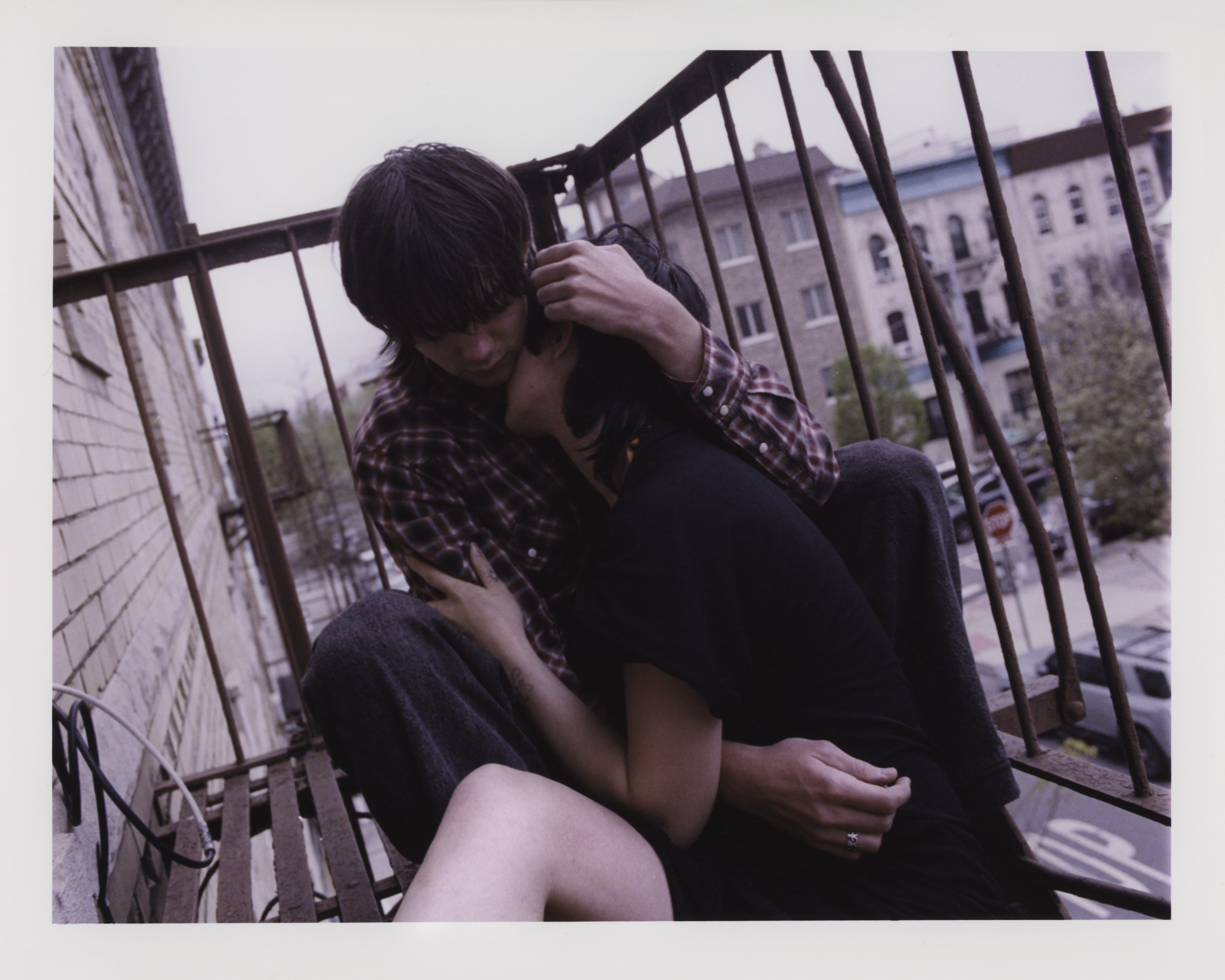
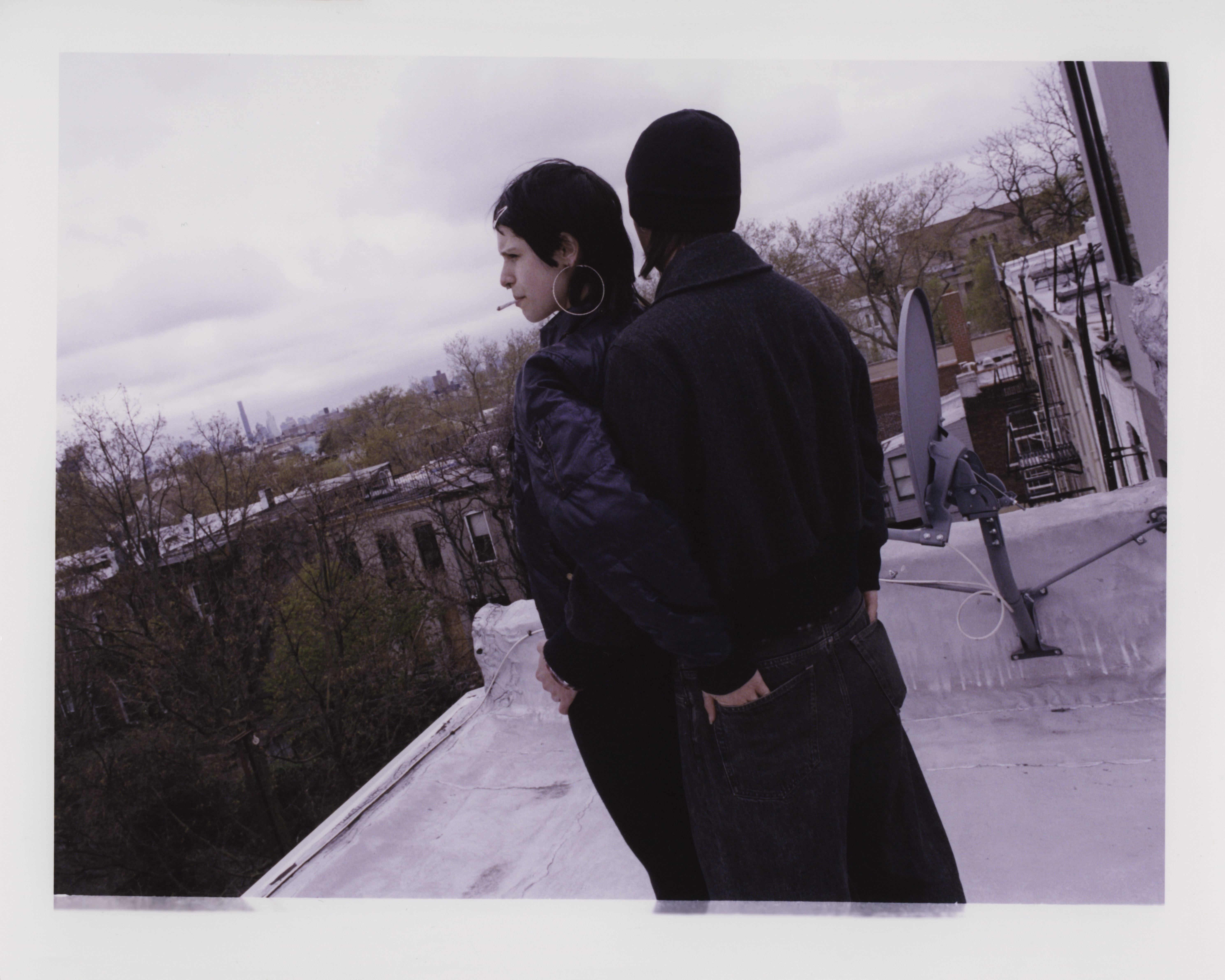
EM and SHEP wear own clothes
And how do you go about doing that, making someone feel comfortable in that moment that you're taking their photo?
EP — I think it's really interesting. Maybe what a lot of people never see is the moments in between that photo. So a lot of time is spent beforehand with the person. Even if you have a stylist involved and you're getting them changed, it's so important that you're not feeling like you're just dressing someone up. They're not going out there being an actor. You have to really start to quickly connect with them and make them feel like they're going to be seen properly and not act as this mannequin basically.
DR — The model feeling comfortable and confident is always a priority and largely the defining factor of an image. It’s important to establish that from the get go.
And then beyond that, being a young creative, I would say I want to talk about in a way the value of having a fresh perspective as opposed to being a veteran in the industry and being so used to doing something in a certain way or feeling like there's a structure. Especially now, I feel like people are so much more willing to challenge the things we've learned.
EP — I think that's super important. I think it's been around for a long time now, the whole fashion photography. There's a big industry around fashion, and I think that people are kind of getting bored with the really slick, well routine, really well polished stuff because it just feels too much like an advertisement. It feels like you're being sold something so heavily that most humans' reaction to that is to kind of reject it a bit. But I think if you're able to show a real story, a real person with real humanity to it, then people are going to get more into the image. They're going to really fall for what's being shown.
DR — Young up and coming artists like Evan and myself are what fashion desperately needs. I’ve lived in New York for five years now and spent some time in London and Paris. Definitely have noticed some differences between working creatively in these regions. New York gate keeps fashion and the culture and industry that enlivens it. Although gate keeping is necessary to preserve the luxury and glamor that makes clothing aspirational, people our age deserve to be in positions of power being that we are at the forefront of what is cutting edge and what that fantasy is.
Iris & Parker

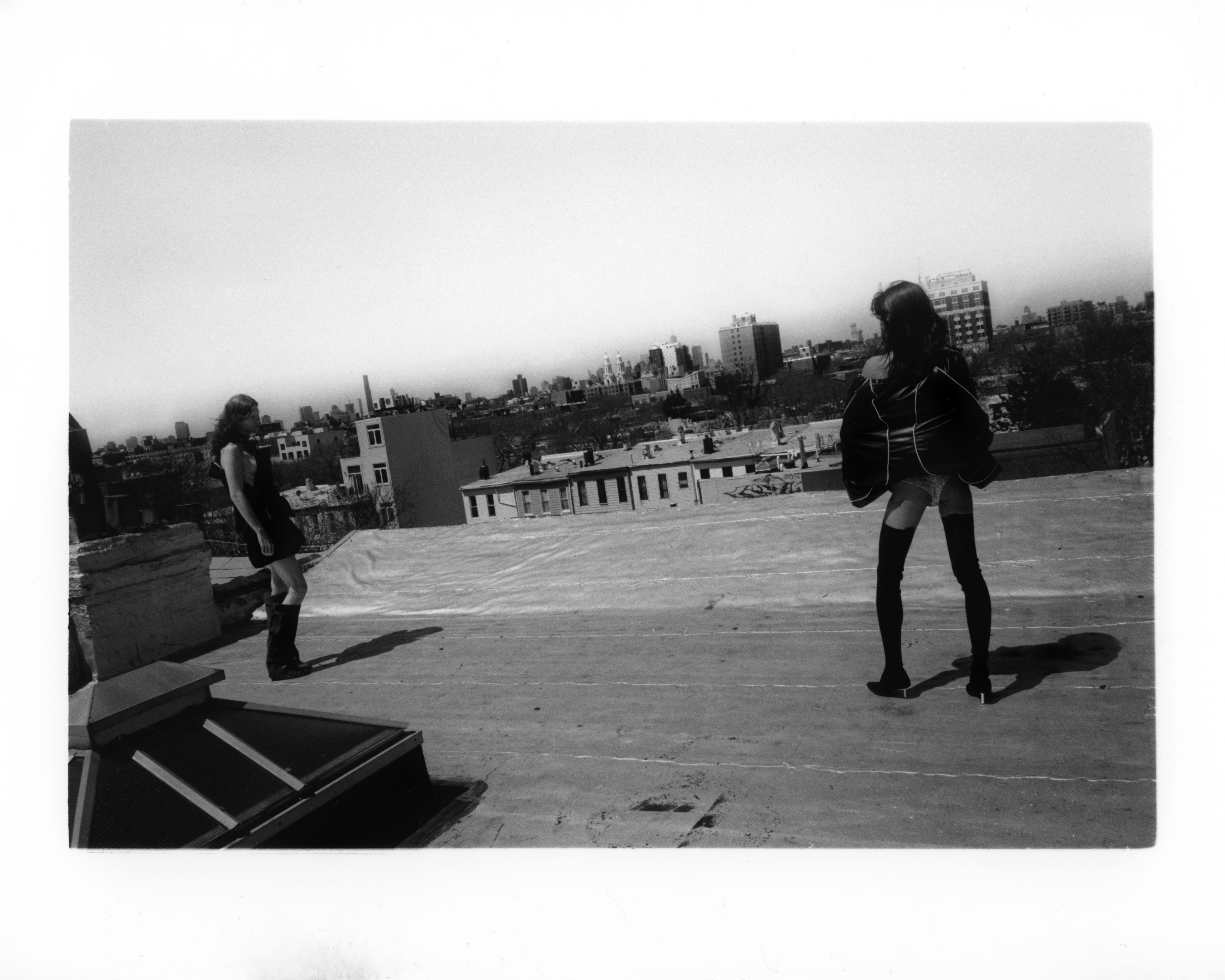
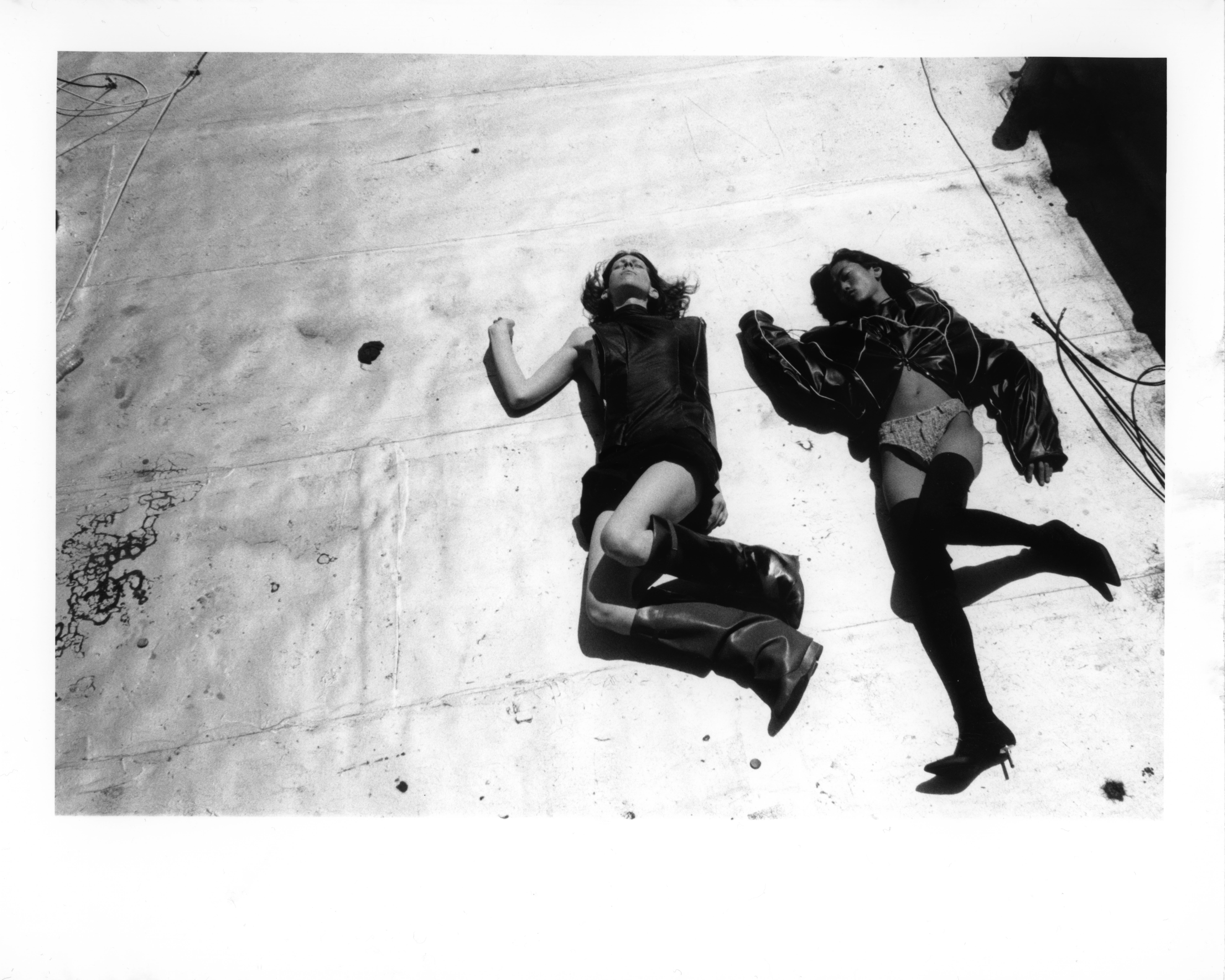

IRIS wears DRESS by HYACYN; (look 2) DRESS by THE CORNER PASSED and stylist's own SHOES
PARKER wears UNDERWEAR by LARUICCI and SHOES by CFCL; (look 2) JACKET by THE CORNER PASSED and SHOES by CFCL
I mean, I just think this generation can see through it so quickly. We just automatically know that most of the things we're absorbing in fashion photography is to reach a selling point. But I think beyond that, it's as a photographer being able to work with a stylist that has a very clear image and isn't just plugging in a brand for fashion credit, but more so because that piece really makes the entire thing come together.
EP — Yeah, that's why it's amazing working with Dax. I mean, I've worked with quite a few stylists and it was really great seeing Dax work because they spent a really long time just staring at the person, getting 'em to try it on, and really trying to witness what it felt like to be in a room with this person who's wearing that piece of clothing. And it was a really, really nice, slow, methodical, real artistic way of, I thought, styling someone. And that was, I think, why it may come across so well in the shoot because Dax really took time to look at the people and how they actually felt. You can tell with someone's body language as well, if someone starts to hold themself that feels as if they're not comfortable, that's going to show in an image you have to make this person feel like they're being themselves.
DR — Aw Evan don’t make me blush, it was such a privilege getting to know and work with Evan. He has such a comforting approach to making images and I also really appreciated our dance and marriage of creating. It’s so satisfying being able to witness a natural fruition of projects with people whose relationships were born out of the process itself. Riding that high of a developed and consistent creative flow is what kept us going, especially once we reached a point of ‘heaven’.
Do you have any favorite moments from shooting this story?
EP — Oh, there's a lot of rooftops. So for me, in London, no one has a rooftop, but in New York, most people kind of have this rooftop you can kind of get onto. And it was so great. I just loved being on this perspective of being on top of the city. You really do feel like you're kind of a part of it, but also you get to look over it. It was really nice for me as someone who doesn't really get to experience that.
DR — My favorite moment of the shoot was when we were shooting Alex and Josi. Alex had 30 minutes until they had to leave for their shift as a security guard, which prompted the idea of using their baton and flashlight as props in the shoot. Evan and I played into the environment’s we were in, embracing them just as much as we did the models. Also, styling Alex and Josi felt the most fun because of how comfortable and conversive we all were. Everyone genuinely was enveloped in the pursuit in depicting them just as they were. That felt like the most beautiful and natural approach.
Nisi
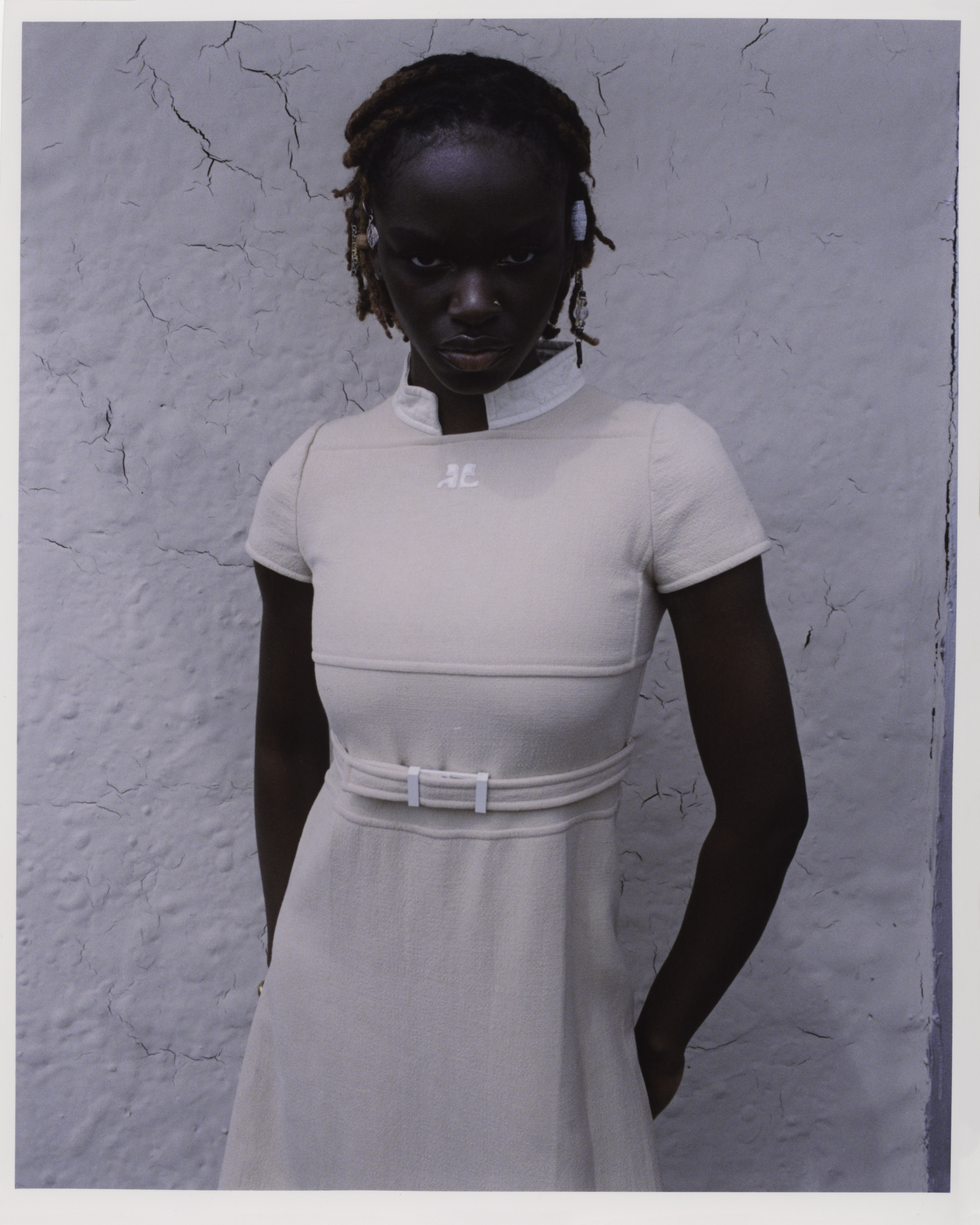
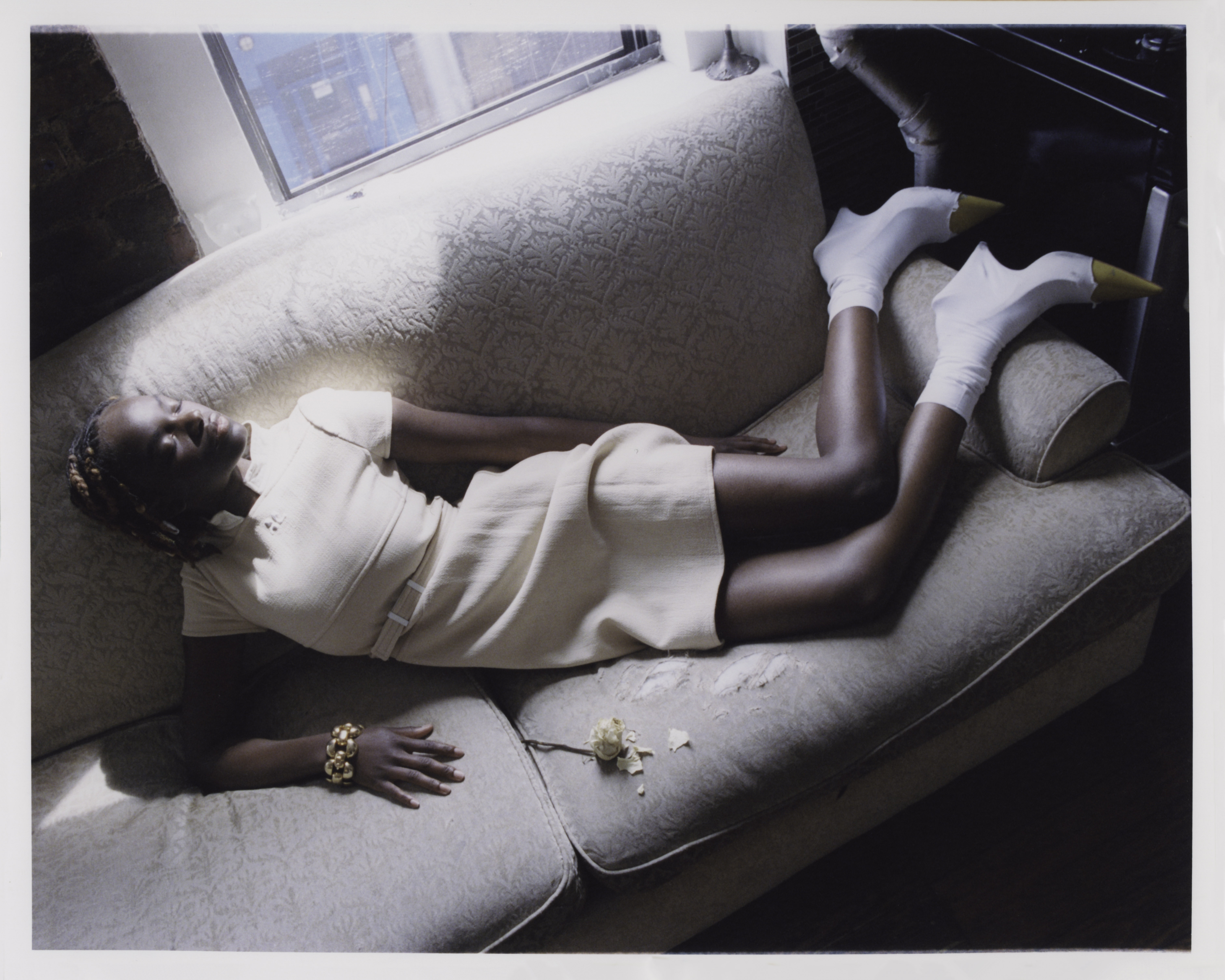
NISI wears DRESS by COURREGES from Allison’s Archive, BRACELET by LARUICCI, and stylist's own SHOES.
Do you shoot in New York often?
EP — No, that was actually my first time in New York.
How would you describe this experience to the countless times you've probably shot in London?
EP — Yeah. Well, I think there's such a parallel between London and New York. There's an obvious cultural exchange that's so massive. I mean, even though I was there for just over a week, I very quickly got into the city. I very quickly understood what it was like. Because I've lived in London for so long, it really does feel like London. Obviously there's quite a few big cultural differences between America and Britain, but I think on an interpersonal level, it felt really similar. It felt like people understood the difficulties of living in a city, and that really creates this sense of, I guess, community within this massive city.
DR — London definitely felt more attuned to this concept I mentioned earlier about uplifting young, up-and-coming artists and being willing to take a chance on fresher, even riskier perspectives. We like to think of New York as ahead of its time, but when put into perspective with the rest of the world, New York puts its money-driven capitalist ideologies before all else. At the end of the day, New York is still in America. I think that London celebrates fresh ideas and new perspectives more than New York.
Yeah, actually, I interviewed this photographer, Alain Levitt, he was a photographer who moved here in the 90s, and he talks about youth culture and how in the city, youth is united by a shared dysfunction — rent inflation, leaving family to come to a new place, the food’s expensive, everybody’s going from job to job. Do you feel like that dysfunction is something that is also in London?
EP — Oh, massively. And I feel like it's really interesting because these cities that we live in are London, New York, even Berlin now, Paris, all the big cities, they're not made for young people. It's a really difficult place for young people to live. If anything, the city is actively trying to make that young person not stay at incredibly high prices, especially now, it's a really difficult time. Most young people have to work two, three jobs. It is an insane thing. But amongst that kind of insanity and that weird survival, I think it creates this breeding ground of you looking at these other people, and you're like, you really want to be here because it's not easy for you to be here. It's not easy for me to be here. And that creates this, I think, really intentional side of youth culture where they just explore massively. They experiment because they know that this place is really difficult to live in.
DR — And it’s that exact dysfunction that the young people of these major cities resonate so deeply with, which is the exact thing creatives like Evan and myself are trying to capture. We need to see the dysfunction of life in fashion in order to resonate because as a young person navigating life and the city, this shit is full of imperfection. Imperfection is beauty.
Thomas
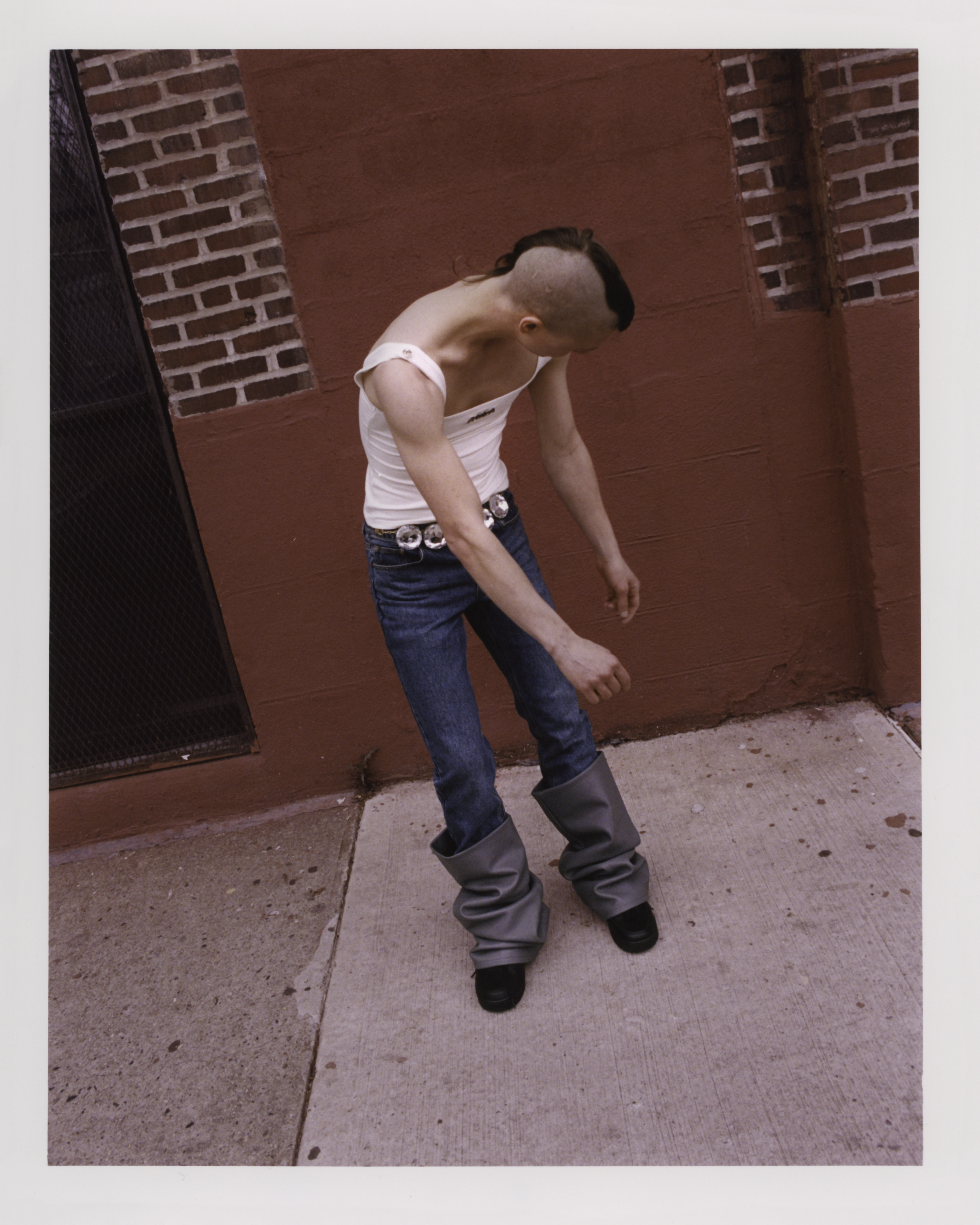
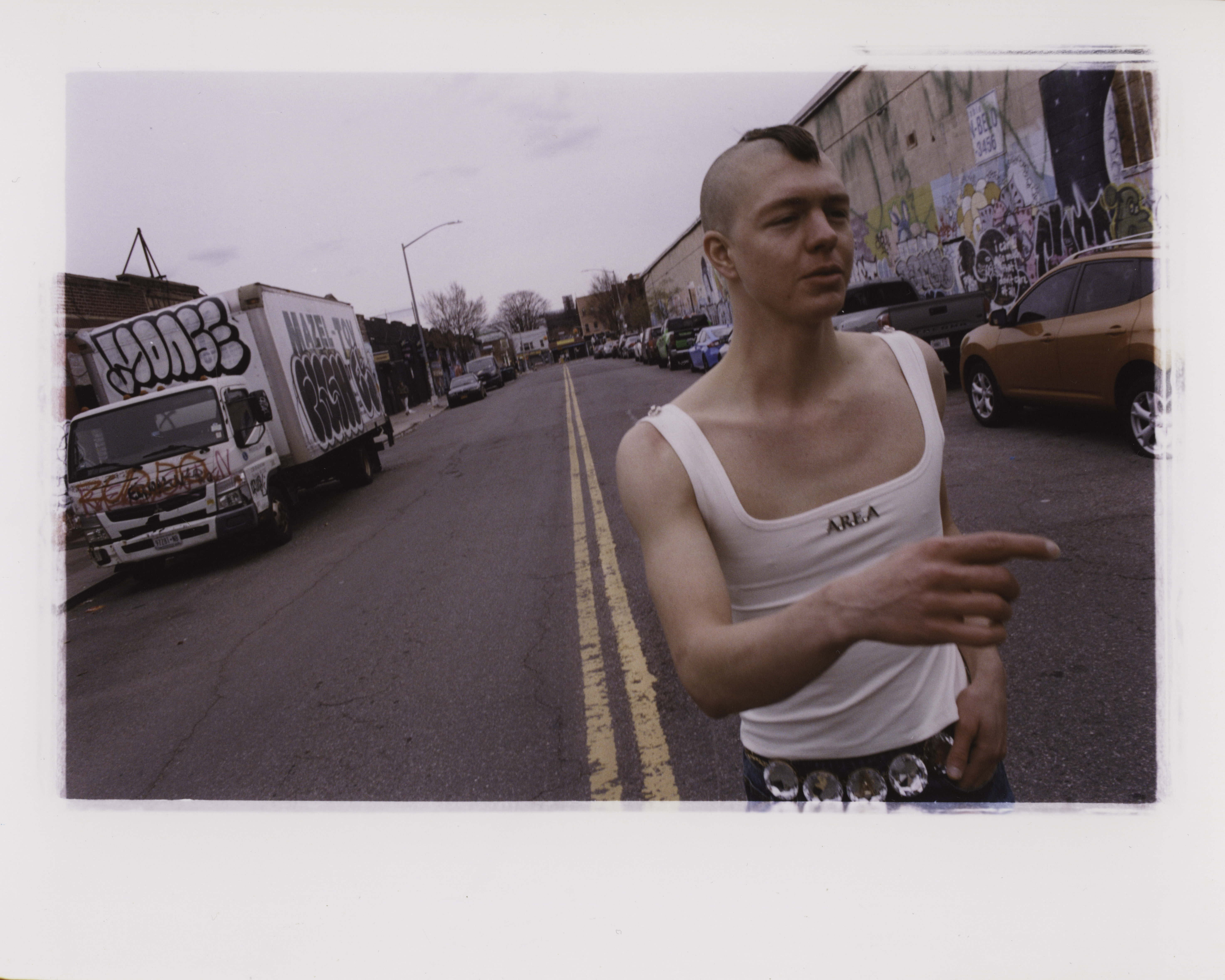
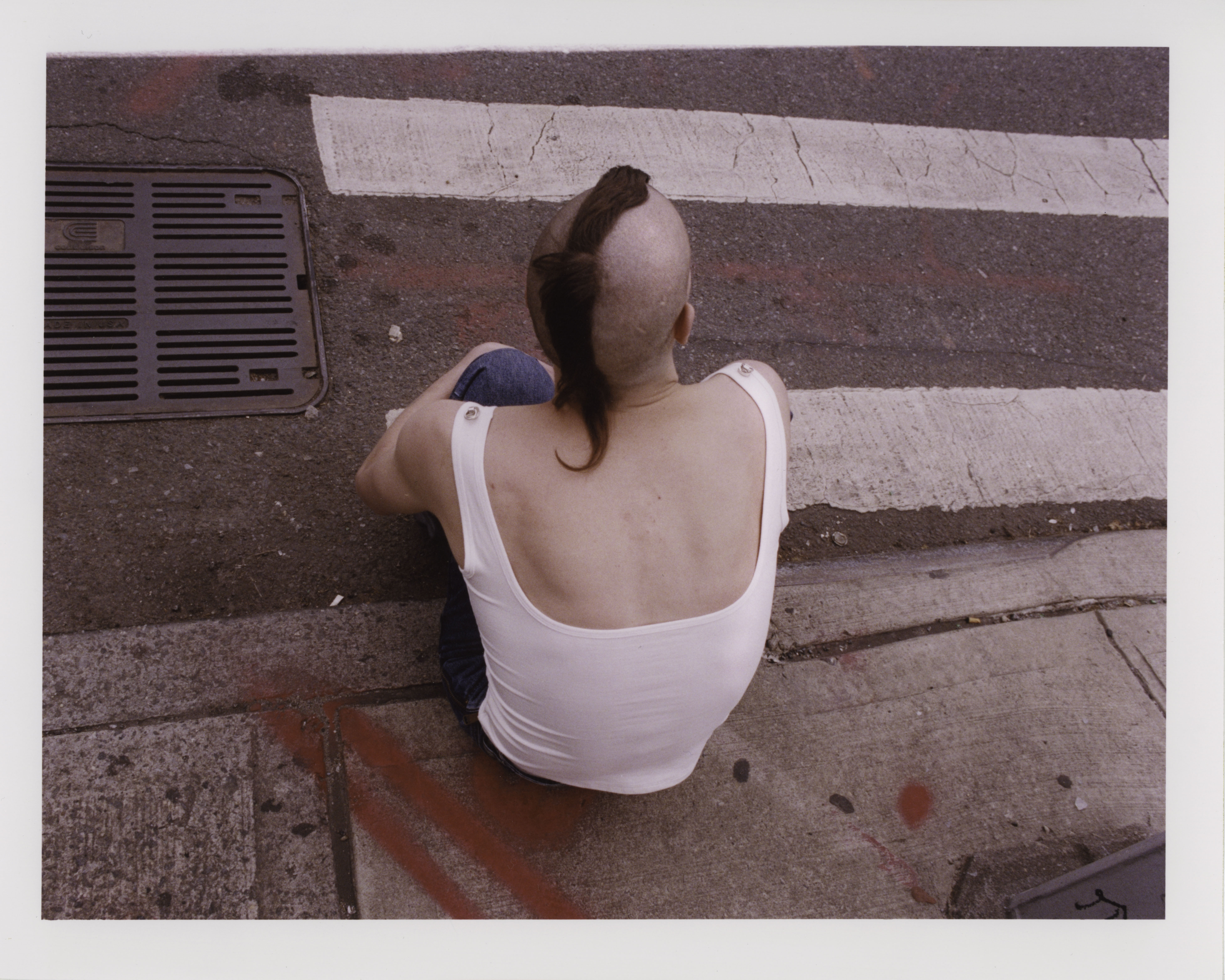

THOMAS wears TOP by AREA, JEANS by AREA, and SHOES by HYACYN; (look 2) JACKET by GANNI, PANTS by HYACYN, UNDERWEAR by HYACYN, and own SHOES
The one thing with a small town in comparison to a city is that it’s easier for there to be a uniform mentality. Everyone dresses the same, everyone shops at the same local stores, of course not as drastically these days, but it's very much only in cities like New York, London, Berlin, Paris, where you can pass 50 people on a block and every single person looks super unique.
EP — And it's mad. And especially in London when I moved here, the culture really is, it pushes you to explore your uniqueness, which I love. It's so great, and people do have the freedom in these cities to really experiment with themselves. And I think being a human really does mean you're constantly changing. You should always be experimenting because we're not these fixed beings, and that's really healthy. I think if an environment can really push people to try new things within themselves, that's a place for a lot of growth, I think.
DR — Exactly! I feel so privileged to live somewhere that’s constantly evolving. It really reflects and fosters personal evolutions as well. It is for me. Without moving to New York, who knows where I would be! Bitch I literally became a different gender here. I would not be half the person I am today without the experiences and connections I’ve made in New York, London, and Paris.
If any of the people you photographed in this series look back at this five years from now, they might be completely different than they were in these photos.
EP — They'll be so different. I think the thing is with these cities as well, because there's so much, there's so much to take in to do that, I think you change and experience a lot quicker. And so whenever I'm in London and I think back to just the year, I feel so far from that year in a really great way. And I think that's really beautiful, and that's why it's so nice to photograph young people. I think I just know that the image itself will just kind of continually get more and more powerful because as time moves on, this image just starts to stand alone and the emotions really intensify. It'd be really great.
DR — That’s what’s so surreal about photography, the permanence of images. It’s capturing a specific time, place, and feeling. An essence that helped me love and understand Evan’s choice to use film for this project. We live in a digital age, and with instagram being the people's art gallery, single images lose their potency. We are in an age of postmodern eclecticism, where collection and stacking of references is what catches attention. This has made us lose sight of the beauty of a static moment in time.
Do you ever look back at any of your old series and have a similar experience?
EP — I'm really bad at looking. I struggle to look at my old work. I have that classic thing of anything that's not I'm currently shooting. Most of the stuff that I like is the stuff that I've not shown yet. And then once I try to get shown, I can't look at it. It's very hard to look at.
DR — Wait wow, like who am gonna be and how am I gonna look in five, ten, twenty, even forty years. My taste has come a long way, and it’s been super gratifying to see that progression and connect with people from it. I see this reflected even in how I look throughout the years. It feels great when someone really understands and appreciates that bigger vision.
William
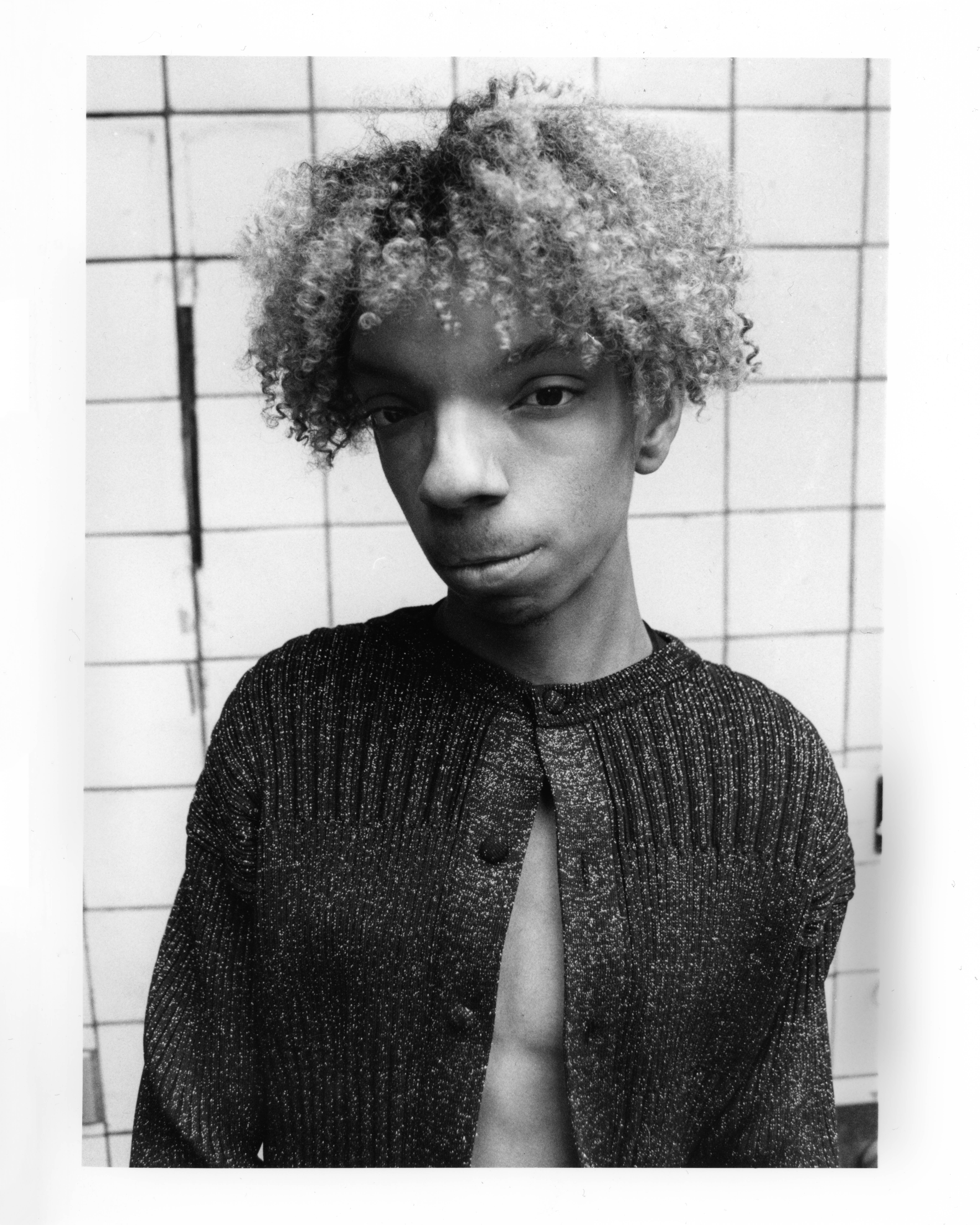
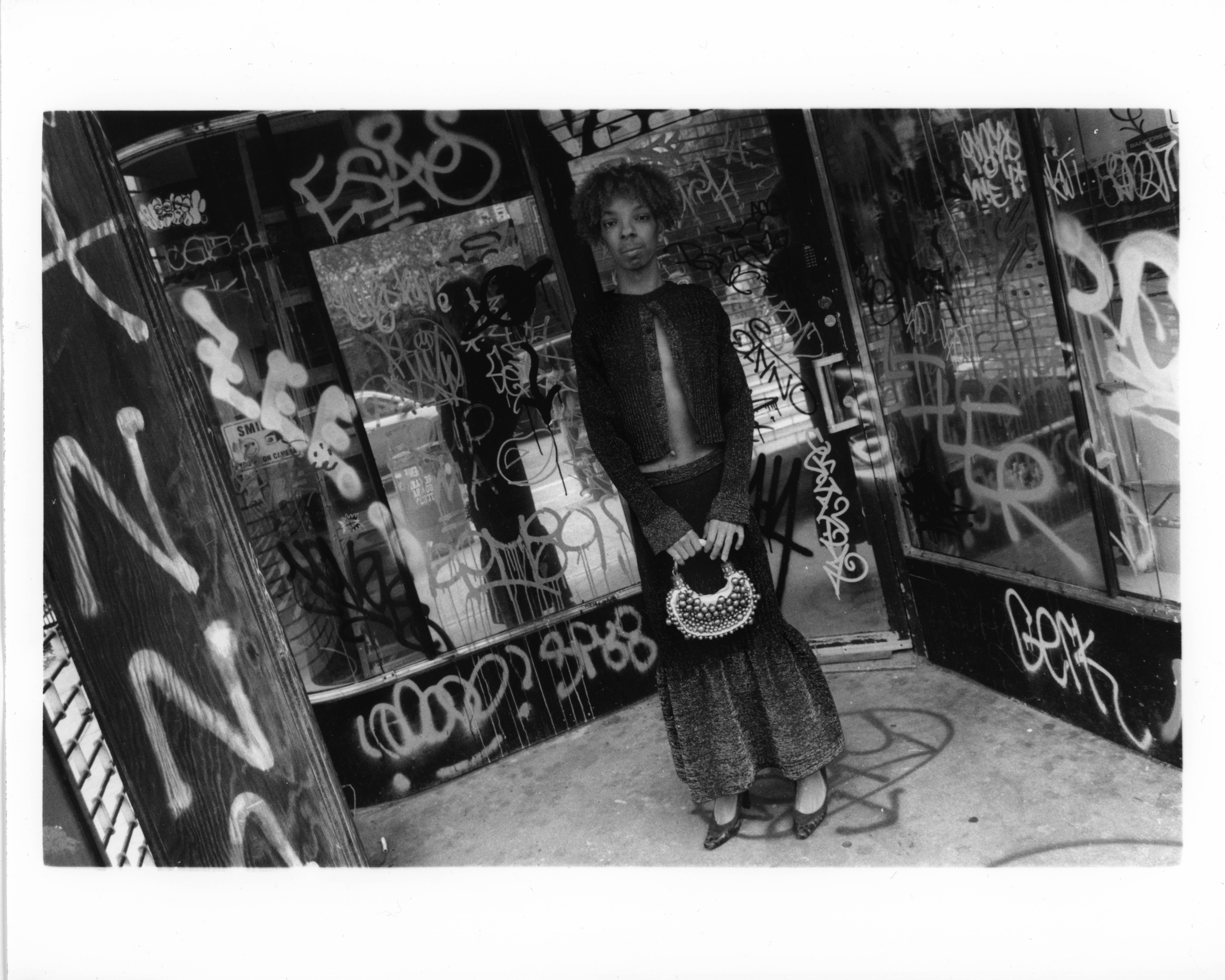
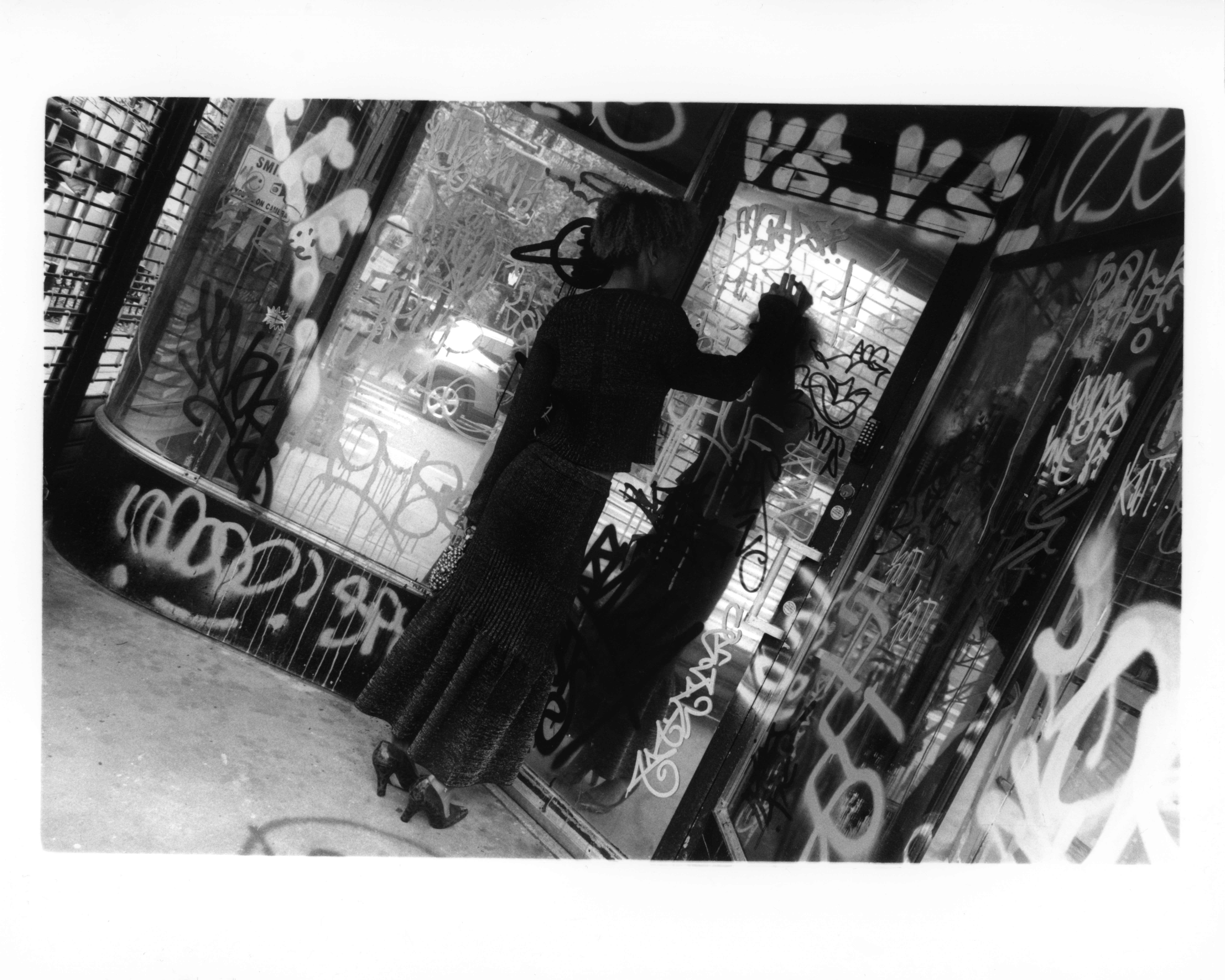
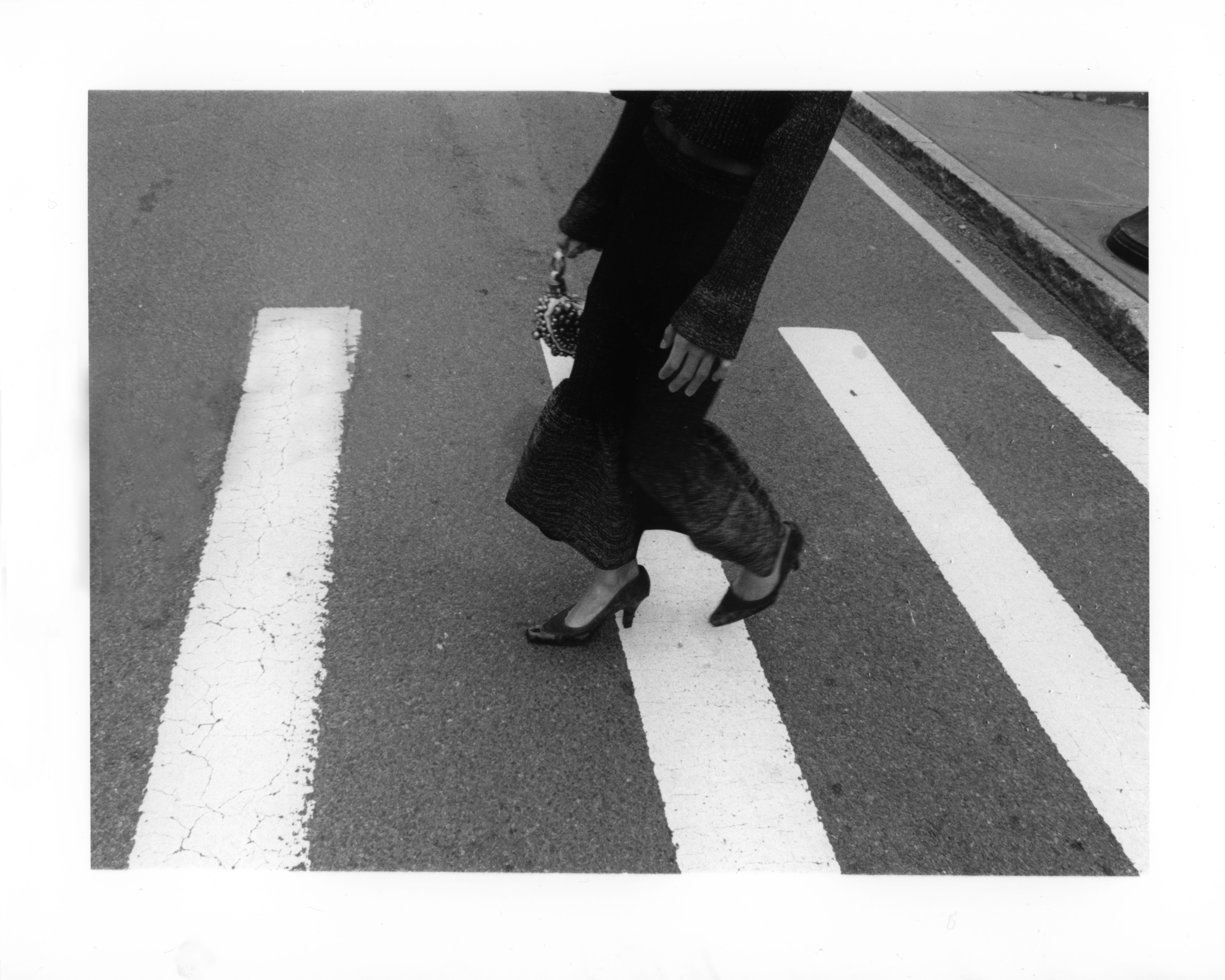
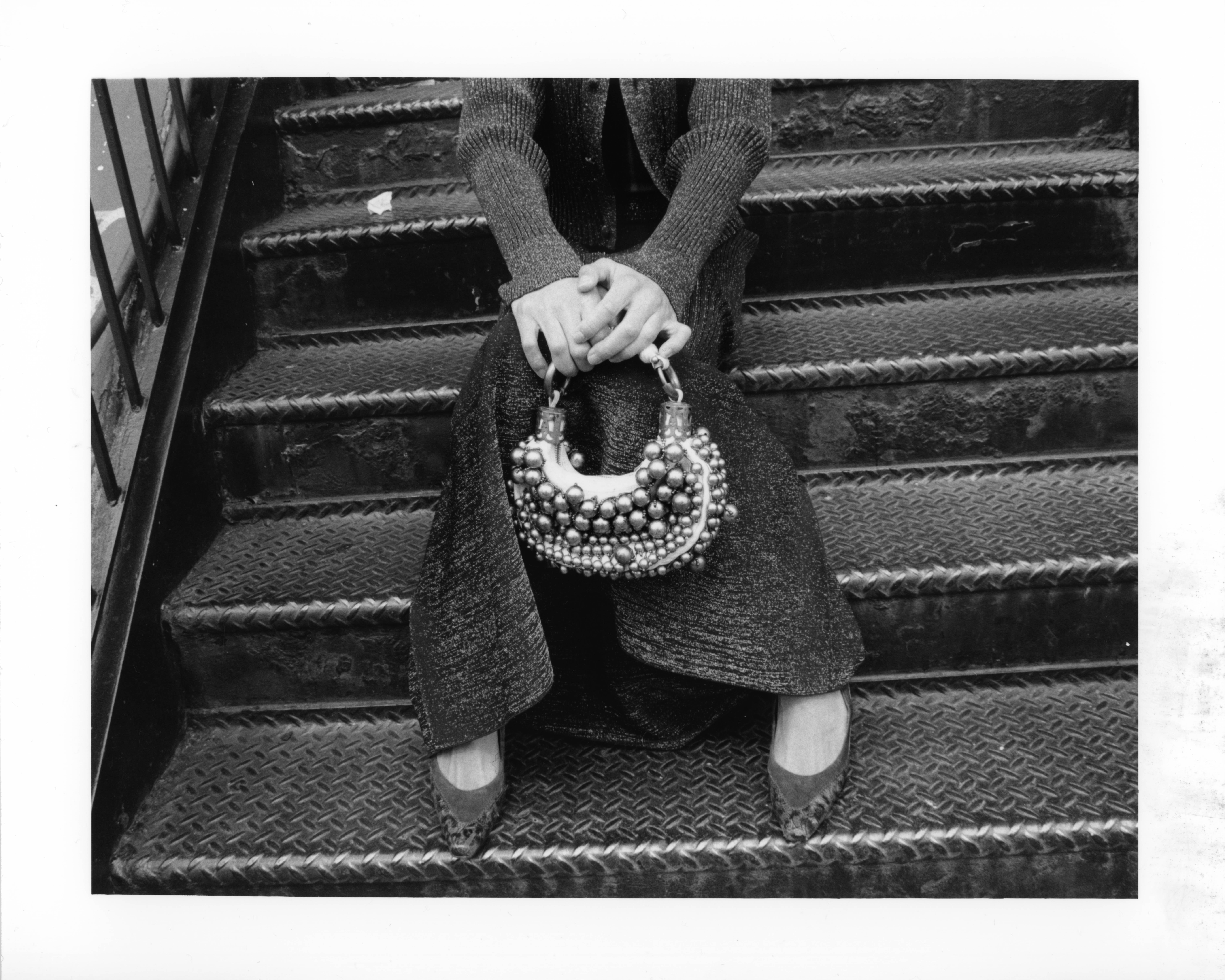
WILLIAM wears CARDIGAN and SKIRT by CFCL, stylist's own SHOES, and BAG by CHLOE (2002) from Allison’s Archive
Yeah, that makes sense. Social media is often given this negative connotation but you’re able to find connections so easily, in a way you feel less alone, which is nice.
EP — And it's really beautiful to see. I mean, when I was in New York, I was couch surfing the whole time, and I was staying with some people who were getting ready to go to some of the encampments at NYU, and it's really beautiful because they are organizing and they are informing each other on their phones. This is how these grassroots movements now happen. They happen online, which is fucking great. And it's really good because you really can't take that away from people anymore.
DR — Social media is fab and I’ll stand by that. There’s brain rot and the monotonous feeling of being inconsequential, but I love it all at the end of the day.
How do you feel about translating your work to social media channels? Do you keep anything to yourself?
EP — Well, I'm working on a book, but those images will eventually go online because I like the idea that I can show my work to people. I love archiving. I love showing people in a really intimate way. But ultimately, I guess I'm trying to say something in my work, so I want people to look at it, and maybe start a conversation in their head.
DR — I’ve been really good at putting shit out out OUT! I think I was around 18 when I really began the deep journey of figuring out my artistic vision and style. I wasn’t as confident in my work and it felt really hard to promote myself. I would constantly keep things private and worry about the work being good enough. I was really self conscious about the value and meaning that my worK had within the culture. it’s still something I struggle with, but I’ve been checking myself. I deserve to be heard.
